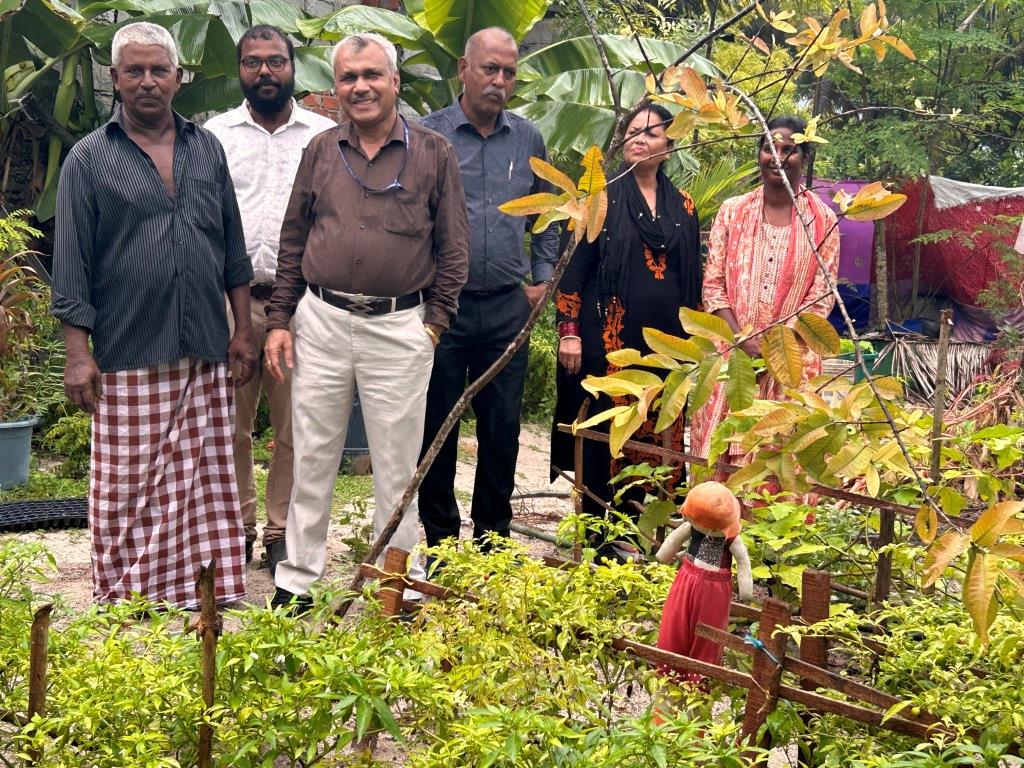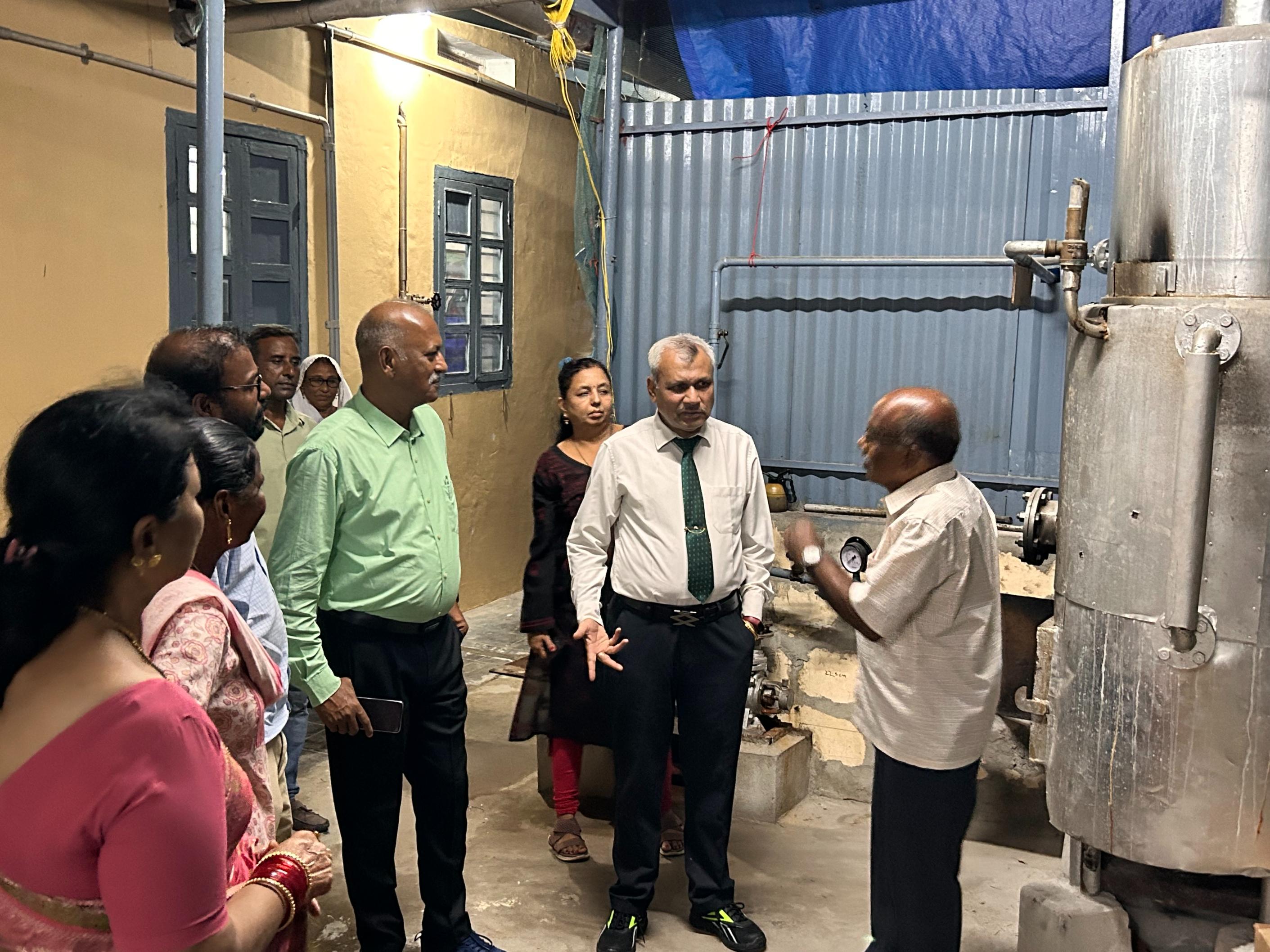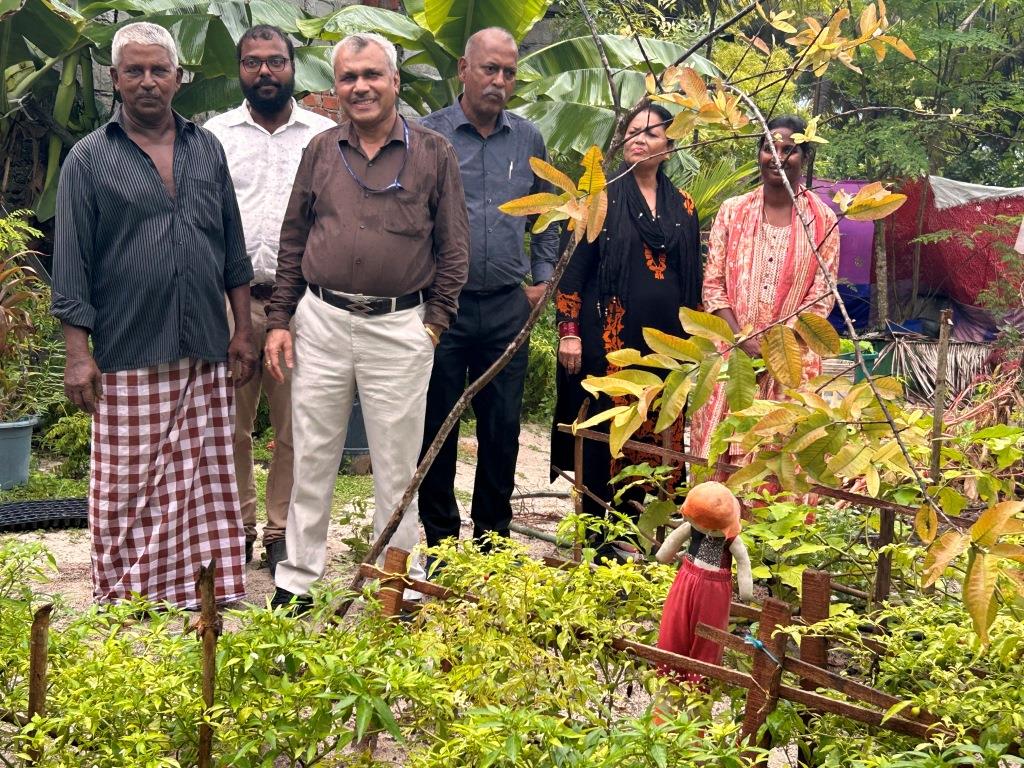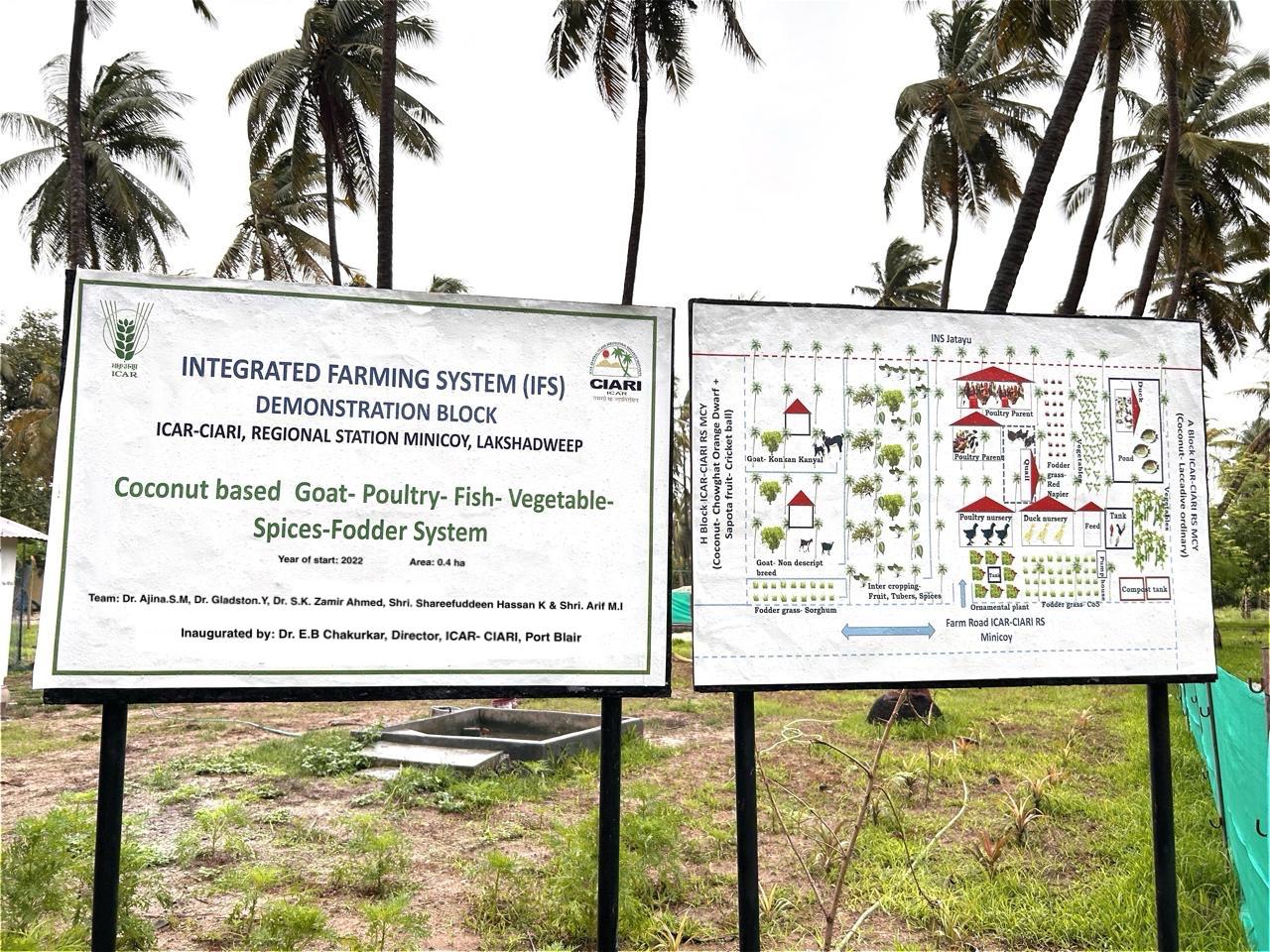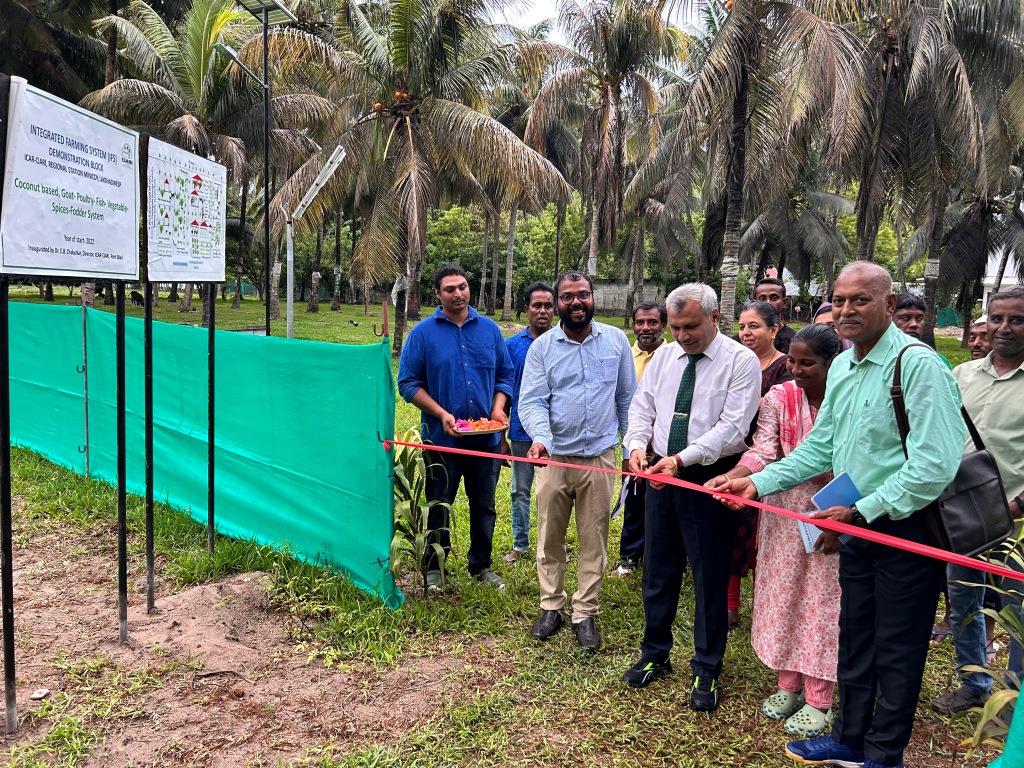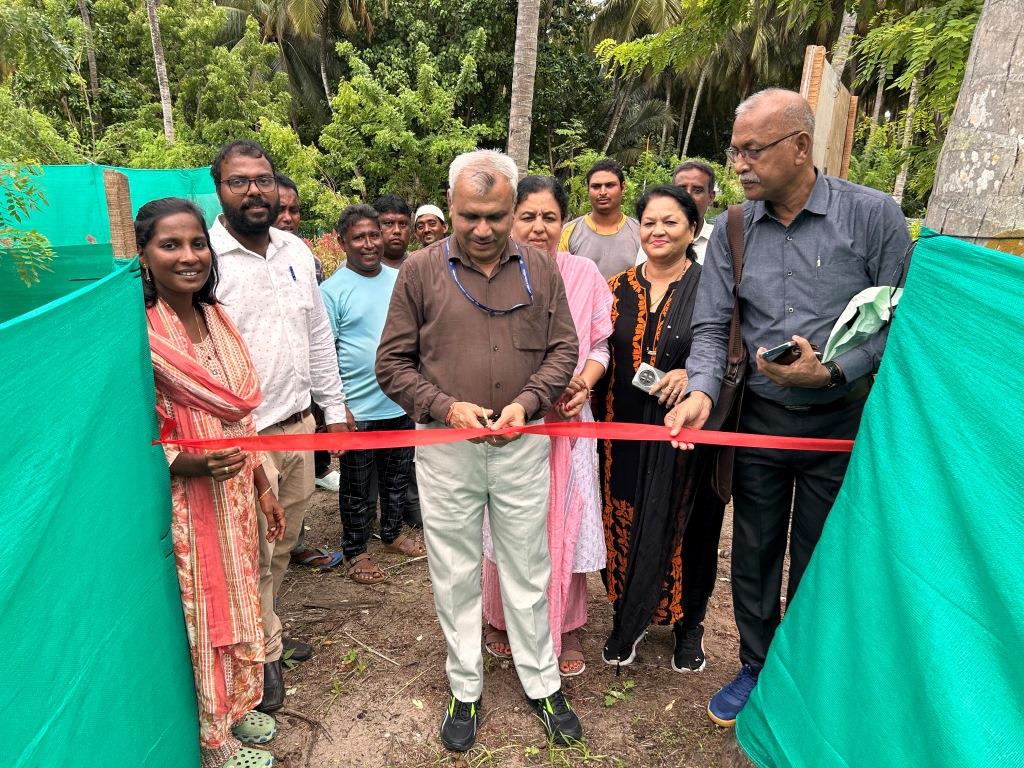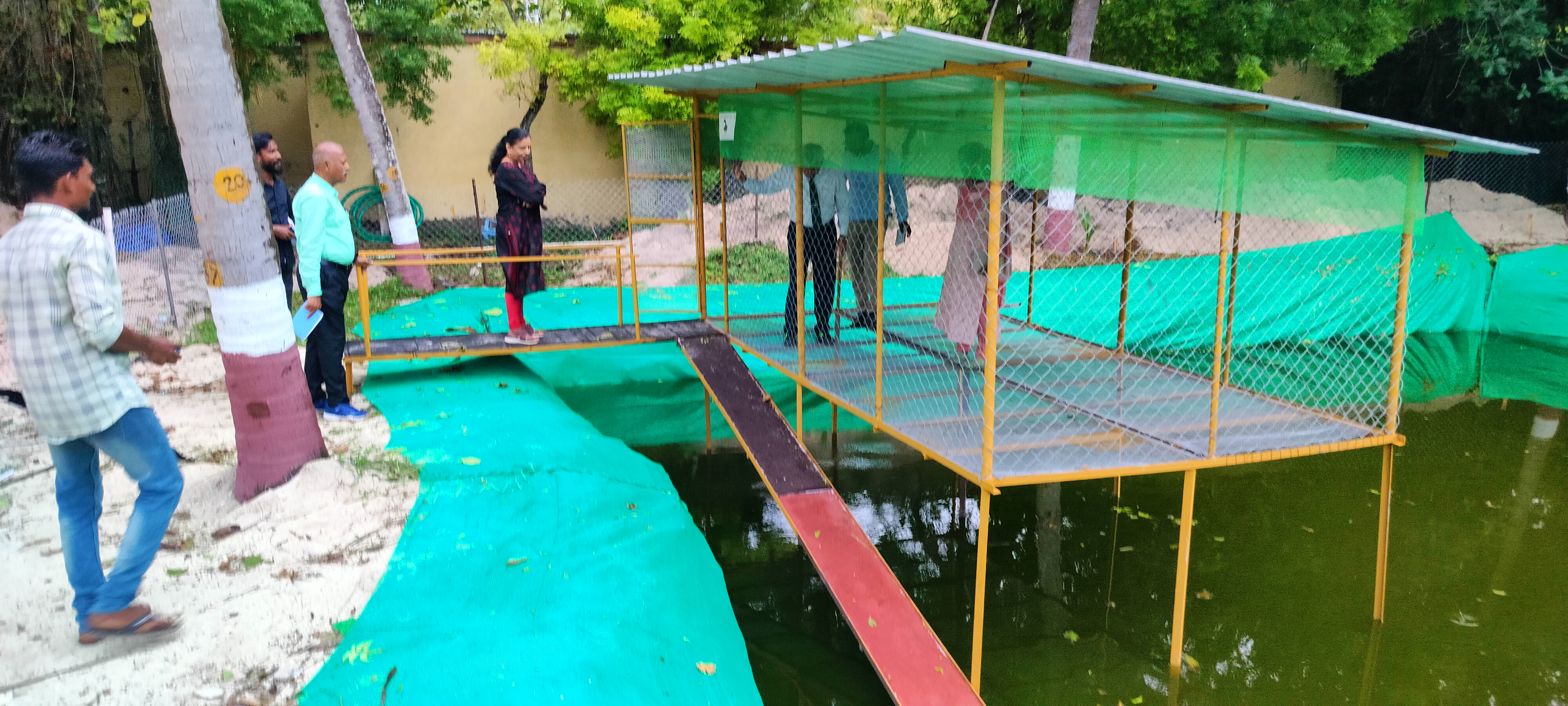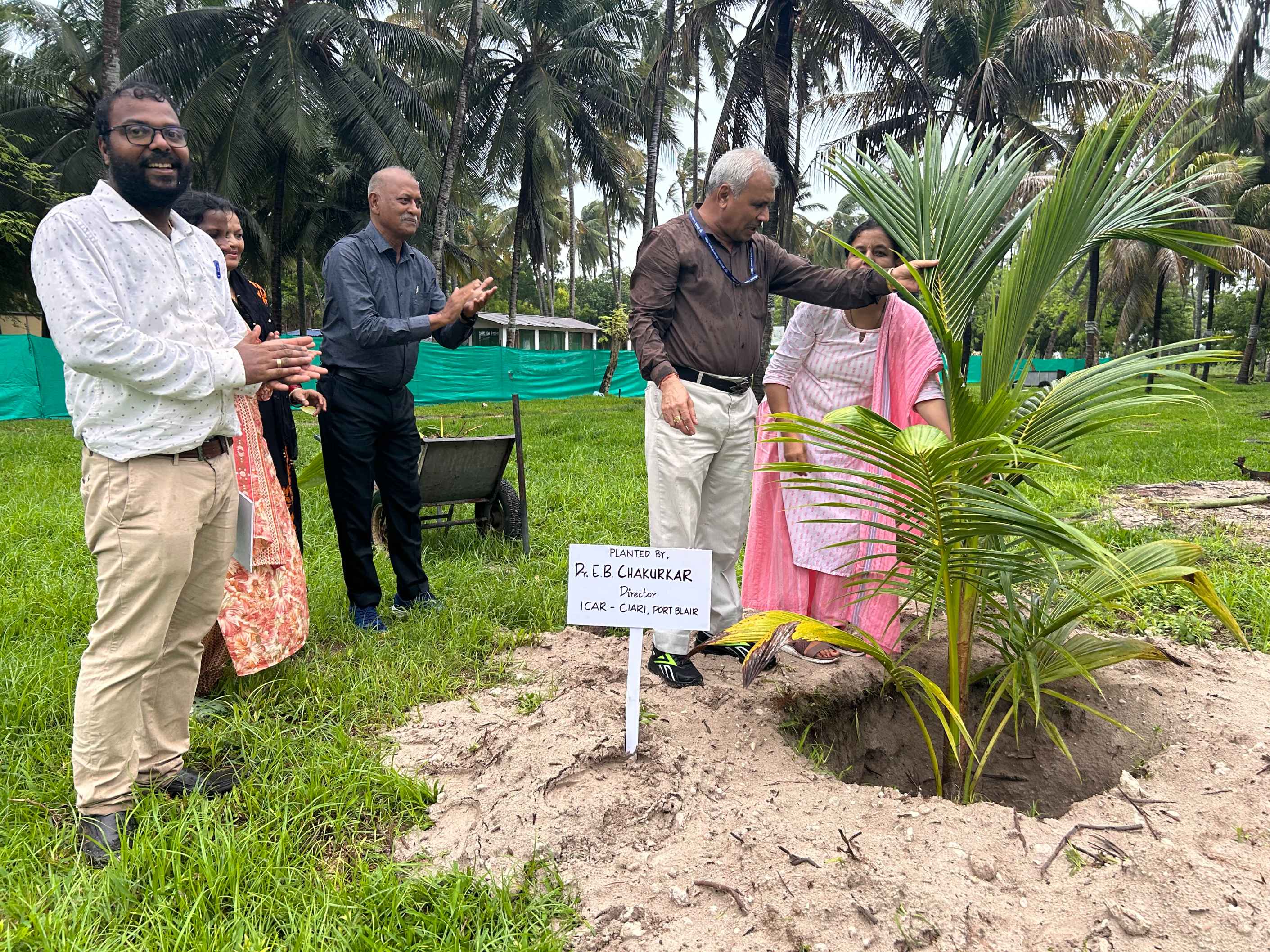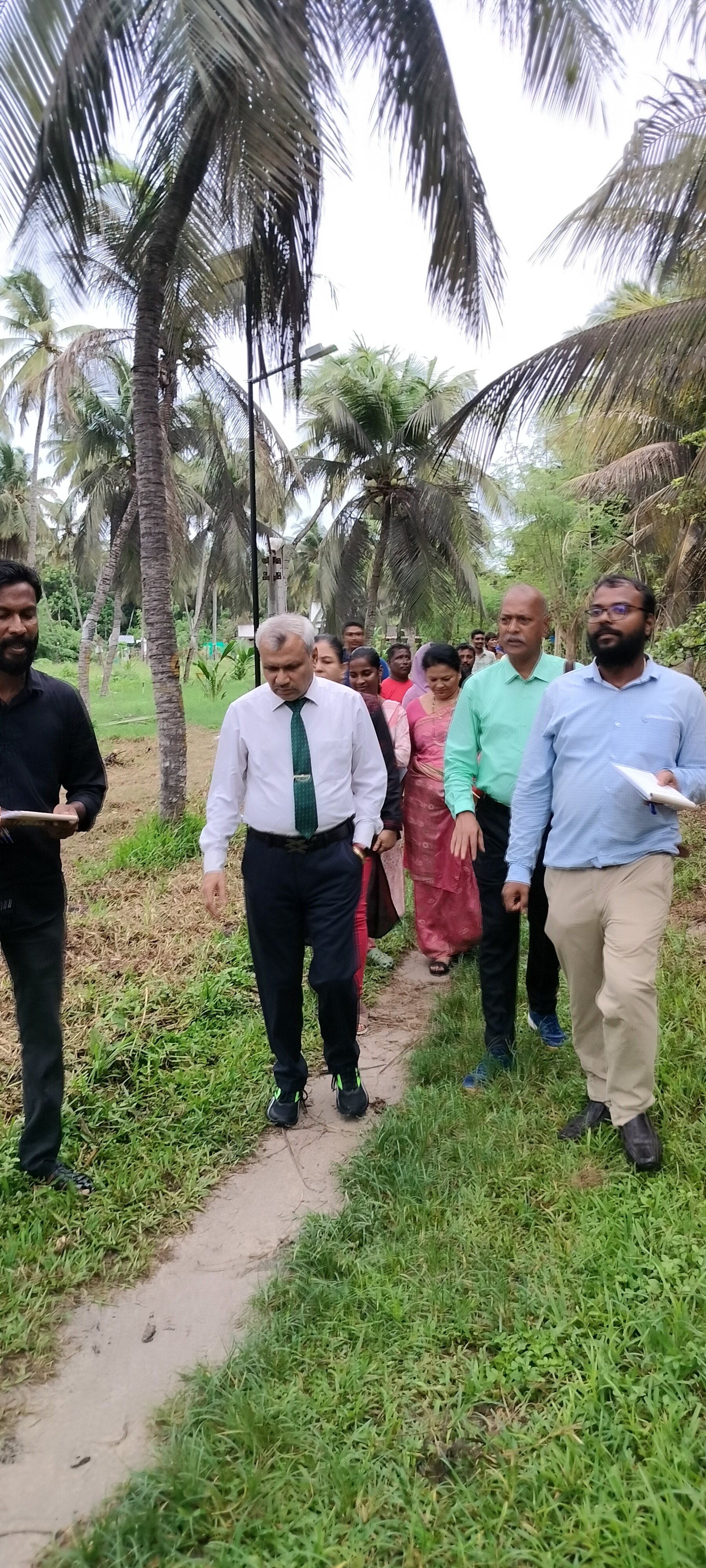| Scientist |
Designation |
Email |
Phone no |
|---|---|---|---|
| Dr.Y.Gladston |
Scientist I/c |
gladston.y@icar.gov.in |
8108986153 |
| Dr. Ajina.S.M |
Scientist |
ajina.m@icar.gov.in |
9820645172 |
| Shareefudeen Hassan.K |
Sr. Technical Assistant |
Shareefudeen.HK@icar.gov.in |
9447983966 |
| Arif.M.I |
Sr. Technician |
Arif.MI@icar.gov.in |
9497547454 |
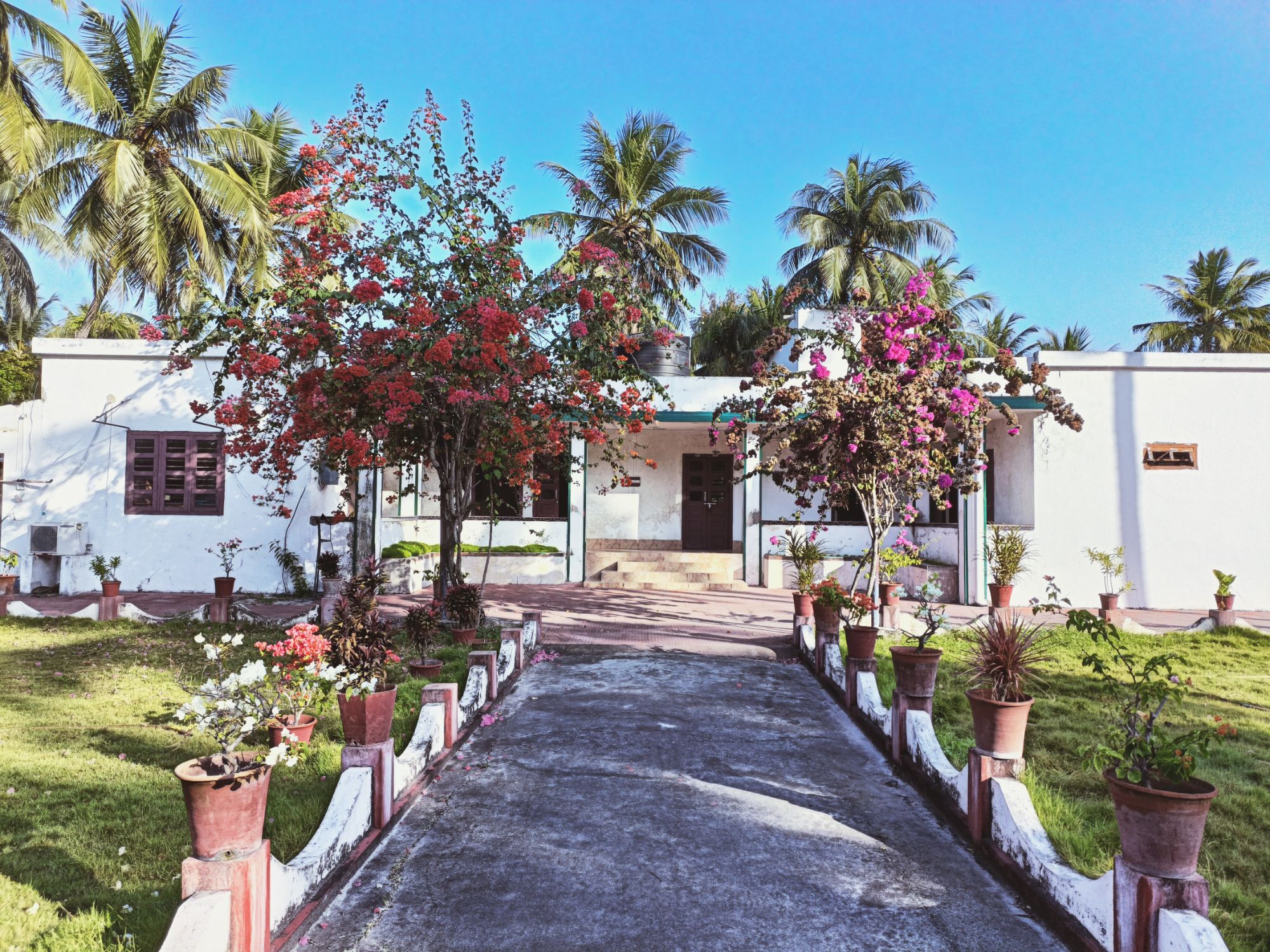
About ICAR-CIARI Regional Station at Minicoy
Regional Station at Minicoy, UT of Lakshadweep, previously known as “ICAR Research Complex for Lakshadweep” was established in 1976 under the overall administrative control of ICAR, New Delhi. Consequently, after the formation of island zone, under the ICAR system, the station was merged with the Central Agricultural Research Institute (CARI), Port Blair, Andaman and Nicobar Islands in 1989. The station was brought under the administrative control of Central Island Agricultural Research Institute (ICAR-CIARI) since 1st April 2017.
Minicoy, locally known as Maliku is the second largest island in Lakshadweep, following Androth and lies exactly West of Vizhinjam Port (Thiruvananthapuram) and at a distance of about 400 km from Kochi (8 degree 17’N and 73 degree 04’E). It is connected by ships from Kochi and Beypore and normally takes about 14 hours in a direct voyage. Originally it was a part of the Maldivian group of islands and still continues to share their language and culture. After 1696 the Kolathiri Raja of Chirakkal (in present day Kerala) annexed Minicoy Island into Lakshadweep and later lost Lakshadweep to the Ali Raja of Kolathunadu in Kannur during the reign of Portuguese and finally to the British. Post-independence, it become the southernmost island in the Union Territory of Lakshadweep in India.
The people of Minicoy are linguistically and culturally diverse from the rest of the islands in Lakshadweep and speak ‘Mahal’, a dialect of Dhivehi, the language of Maldives. Marine fishing and agriculture are the principal pillars supporting the livelihood in all the islands of Lakshadweep. Tuna pole, line fishing and ‘Masmin’ (a smoke dried fish product) production are the major activities associated with fishing, Value added products like ‘Rihakuru’ (fish jaggery) is a by-product of Masmin industry. Value added products like coconut vinegar and coconut jaggery are two cottage industries sustaining on ‘Neera’ tapping, an auxiliary revenue generation from coconut plantation.
Regional station of ICAR-CIARI, Port Blair is located at South Bandaram, 1.5 km away from the main passenger jetty on the main road side towards the Minicoy lighthouse. The station has an experimental farm in main campus, field laboratory and residential quarters in another three campuses nearby occupying a total area of 6.062 ha. Soil here is coral sandy type and has an alkaline pH of (7.0-8.6). Minicoy receives a mean annual rainfall of 1613 mm and the recorded mean annual temperature is 27.9-degree C.
| Mandate of the Station: |
|||
|---|---|---|---|
| To provide a research base to improve the productivity of agri-horticulture, livestock and fisheries through basic applied and adaptive research.
|
|||
| Conservation, characterization and sustainable utilization of fisheries and other natural resources of Lakshadweep
|
|||
| To standardize sustainable techniques for harvest, post-harvest and value addition of agriculture and allied sectors.
|
|||
| Transfer of technology, capacity building, policy support and market intelligence to stakeholders.
|
|||
| Land use pattern in blocks at station |
|||
|---|---|---|---|
| Lakshadweep ordinary + Fruits and vegetables as intercrop |
|||
| Germplasm block (12 accession) + Lakshadweep ordinary+ LCOD+COD |
|||
| Lakshadweep ordinary +Lakshadweep micro + LCOD + Animal component. |
|||
| Lakshadweep ordinary + SGD + vegetables plot |
|||
| Hybrid palm + LCOD + fruit crops + vegetables + tuber plots |
|||
| Lakshadweep ordinary + Banana plot + nursery plot + exotic fruits + fruits. |
|||
| Naturally crossed hybrids + hybrid palms + vegetable plots + fodder plot |
|||
| *LCOD |
|||
| *Plots located in residential campus |
|||
| Technology Demonstration unit(s) |
|||
|---|---|---|---|
| Experimental farm (5.02 ha) |
|||
| World coconut germplasm block with 12 accessions of both local and exotic origin. |
|||
| Coconut based integrated farming system |
|||
| Intercropping of vegetables and fruit plants (tomato, chilly, brinjal, cabbage, cauliflower, cucurbits, papaya, sapota, fodder and exotic fruit plants) under coconut cultivation |
|||
| Mini-incubator facility |
|||
| Poultry, duckery, turkey, goatary and cattle |
|||
| Integrated Farming System |
|||
| Nursery |
|||
| Natural farming |
|||
| Extension activities: |
|
|---|---|
| Technologies developed by the centre are transferred to the stakeholders and also depicted at various fora and melas. Demonstration technique of promising practices have been established at the centers farm. Scientific farmers interaction, exposure visit , field days, training etc. are regularly organized to facilitate effective ToT to the farmers/stakeholders
|
|
| Facilities available: |
|||
|---|---|---|---|
| Laboratory cum administrative building |
|||
| Irrigation pond |
|||
| Sale counter |
|||
| Research Achievements | |||
|---|---|---|---|
| Exploration of fishery, biology and market potential of tuna resources of Minicoy Islands (Project code: HORTCIARISIL202200200231) The Scombrid fish belonging to Tribe Thunnini, are known as tunas. Globally the fishes are commercially exploited by means of mechanized fishing fleets from the high seas. The Lakshadweep Islands, a major tuna hub of India, harvested the resources using traditional pole and line method. The present project surveyed and collected the operational data of pole and line fishery from 55 lanchi (fishing vessels) from 11 villages of Minicoy. The fishers of Minicoy started there fishing season from September 2022. The community-based resource management rules by the village moopans followed by each and every fisher. The live bait used for the fishery changes with season. An observation made during September 2022 to December 2022, found that “Hondali” and “Rehi” as bait fishes. A total of 122 fishes were dissected for the biological studies during the period. It was found that the megalopa, squid, Acetes shrimps, Digested fishes, baits are the major food item during the period Integrated Farming System (IFS) for enhancing sustainable Livelihood of rural tribal community of Minicoy Islands (Project code: HORTCIARISIL202200300232) The layout of model IFS plot was prepared with the goat as animal component, duck as bird component, Tilapia as fish component and vegetables as plant component. The one-acre area of A block was ploughed, weeded and separated with live fencing using Gliricidia plants. The temporary sheds were constructed for accommodating existing goat breed “Malabari”. The duck breeds Chera/Chempalli (07 male and 28 females),chicken breed Gramashree (50)and Sasso (100),quail (50) introduced in the system. The existing water shed pond were stocked with Tilapia mossambica. The fodder plants Sesbania, Guinea grass and Napier grass variety Co5 introduced in the IFS block. The existing farming pattern in islands is studied. |
|||
| TECHNOLOGY DEMONSTRATION |
||||||||||||
|---|---|---|---|---|---|---|---|---|---|---|---|---|
|
Pumpkin cultivation under coconut plantation :
Pumpkin, one among the important vegetable crop is preferred by the local community of Minicoy Island. The vegetable locally known as “Burubo” and it is unavoidable during the traditional marriage reception of Minicoy. Due to local preference, and the negligible production in the island, a demonstration plot was done in the farm of Regional station of ICAR-CIARI, Minicoy. Two varieties “Unnat” and “Farmer’s variety from Andaman” introduced and tested the performance in the farm. Two plots of area each 260 Sq.m were made and 36 seedlings were planted in 60X60X100 cm pits, The pit were filled with dry cow dung and vermicompost in the ratio of 1:1. The production details is given in table. The farmers variety from Andaman, performed well in the field of Minicoy, with an yield of 2.1 kg/ Sq. m. and the same was demonstrated to the farmers of Minicoy Island during a field day conducted 12th May 2022. |
||||||||||||
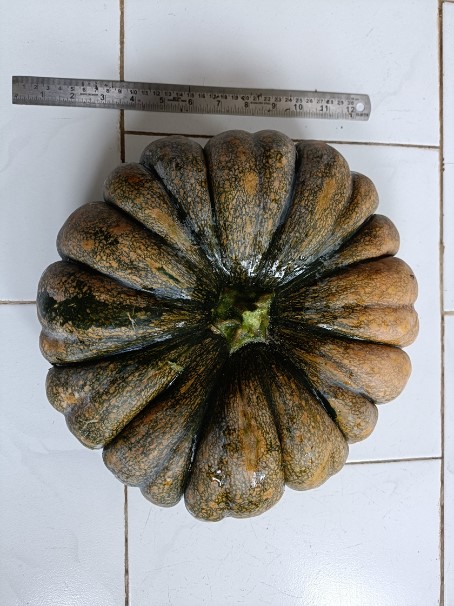
Farmers’s variety from Andaman 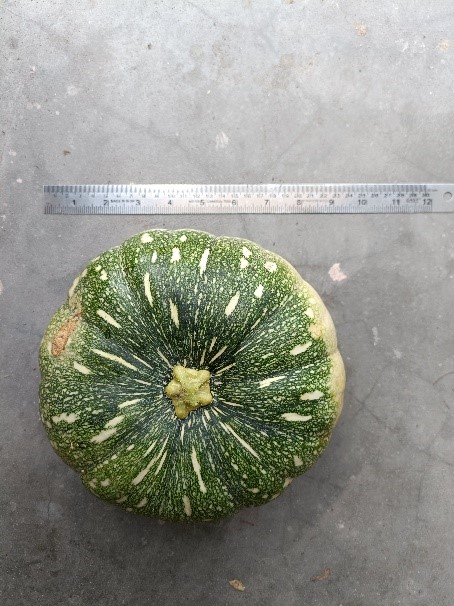
Pumpkin Variety “Unnat” |
||||||||||||
|
Gladiolus-a high end flower under coconut plantation :The tribal community of Minicoy depends on cargo space available in the passenger ships which is voyaging twice/thrice in a month for satisfying agri crop except coconut. Hence the agri retailers of the islands tries to carry more vegetables, fruits and dairy products rather than the flowers. So, the celebrations and decorations of Minicoy Islands are usually decorated with plastic flowers. As an environment friendly-swachta motive, ICAR- CIARI Regional station Minicoy introduced the high value cut flowers in its demonstration farm. Five traits (Friendship white, Pink, Spic and Span) of butterfly type gladiolus bulbs/corms were procured from Kerala Agricultural University. Three channels with a depth of 20 cm were made and manured with fish bone manure. Channels were made 50 cm apart and of length 12 m. The corms were planted with 30 cm distance and depth of 5 cm. The flowering started on the 65th to 90th day of planting. The plants performed well in the Lakshadweep soil and same is demonstrated to the farmers of Minicoy.
|
||||||||

Butter fly type varieties of gladiolus flowers (a) Friendship, (b) Spic and Span, (c) White friendship, (d) Violet and (e) Pink 
Field day on Gladiolus cultivation under coconut shade |
||||||||
|
Sponge gourd cultivation under coconut plantation :Sponge gourd is locally known as “Bodutholi” a highly preferred vegetable crop of Minicoy. The seeds of farmer’s variety of sponge gourd were collected from village and tested in field of ICAR- CIARI, Minicoy. An area of 10 Sq.m., with “Pandal” u were made for the cultivation. Two rows of 7.5 m distance with 5 pits each of dimension 60X60X100 cm were made. The pits were filled with poultry manure of 2kg/ pit, and planted two seedlings in each. The variety, was found to be resistant to the pumpkin beetle and performed well. The yield per Sq.m was 0.8 kg.
|
||||||||

Sponge gourd cultivation in Pandal 
Sponge gourd fruit |
||||||||
|
Ridge gourd cultivation under coconut plantation:
“Turai” the ridge gourd one of the cucurbit crop have consumer preference in Minicoy. The vegetable is locally cultivated in terrace garden for the domestic purposes. The hybrid seeds of variety “Maanya” was tested in field of ICAR- CIARI, Minicoy for the performance evaluation in Lakshadweep. The demonstration plot of variety “Maanya” were made in 10 Sq. m area with “Pandal”. Two rows of 7.5 m distance were made with 5 pits each and the dimension of 60X60X100 cm. They were filled with poultry manure of 2kg/ pit, andtwo seedlings were planted in each. The performance of the variety is given in table. The variety performed well in the field of Minicoy, Lakshadweep with yield of 1.2 kg/ Sq.m.
|
||||||||
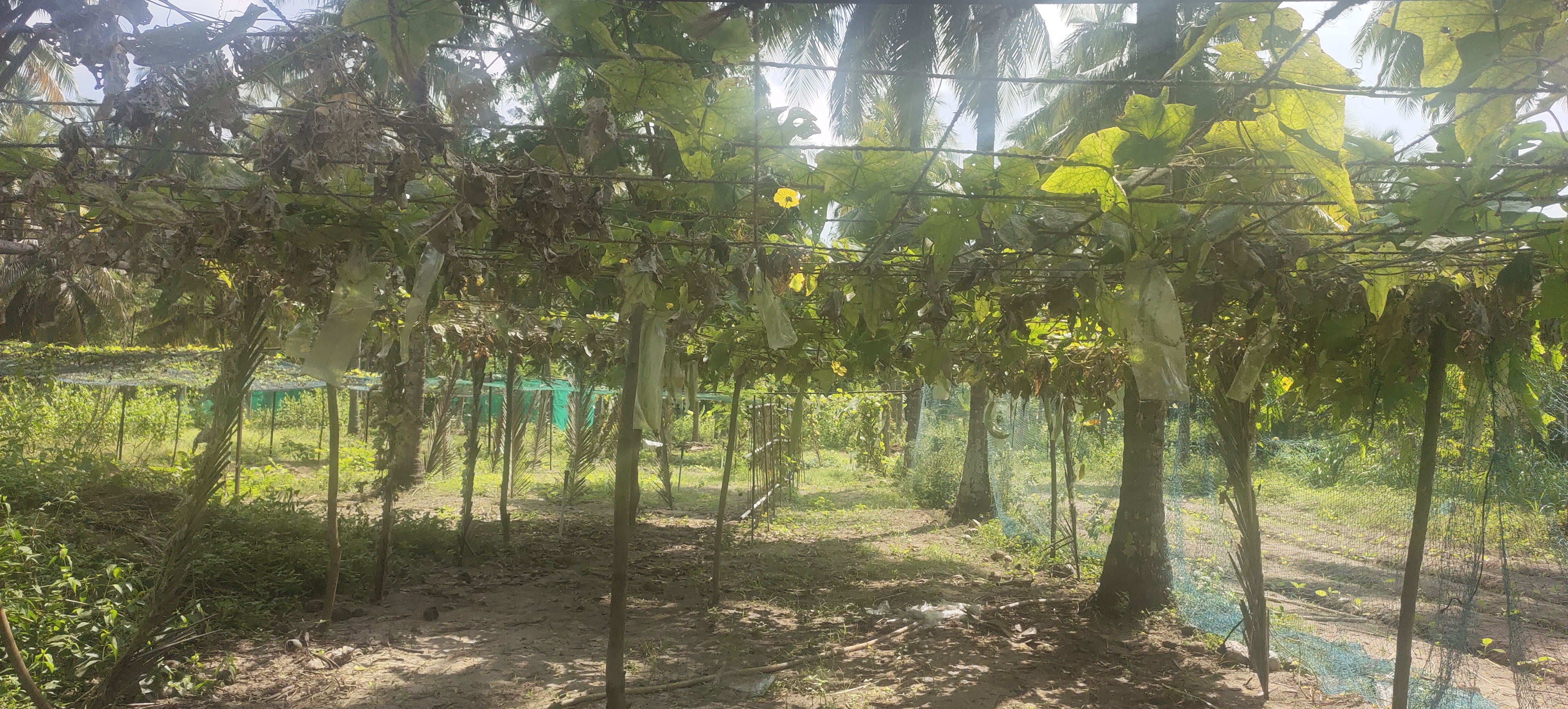
Ridge gourd cultivation in Pandal 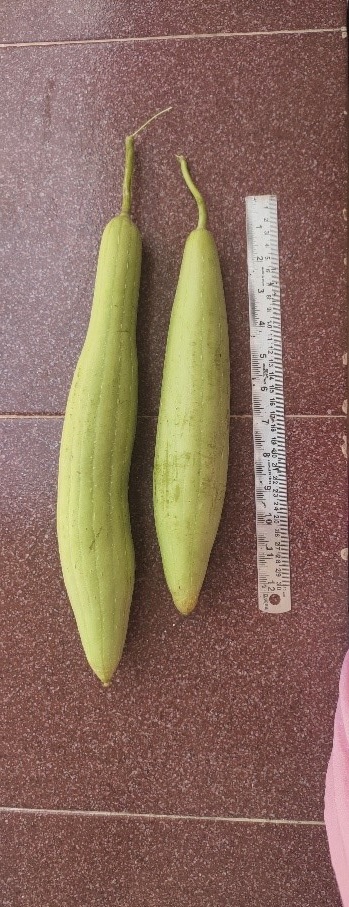
Ridge gourd fruit |
||||||||
|
Clove bean a new conventional vegetable crop to Lakshadweep Islands:
The domestic garden of Minicoy usually recognised with scarlet gourd, sponge gourd, chilli and brinjal. As a new candidate, ICAR- CIARI Regional station Minicoy introduced Clove bean, as vegetable as well as ornamental vine to the home garden of Minicoy Island. The seeds of Farmer’s variety of Clove bean “Nithya vazhuthana” brought from Kerala and tested in demonstration field of the Institute. An area of 4 Sq.m, with “Pandal” was used for the cultivation. The pits were made with the dimension of 60X60X100 cm and filled with poultry manure of 2 kg/ pit.Single seedling were planted in each pit of distance 50 cm apart. The yield and other characteristics of the variety given in table. The variety performed well in the field of Minicoy, Lakshadweep with yield of 0.75 kg/ Sq.m./ week.
|
||||||||
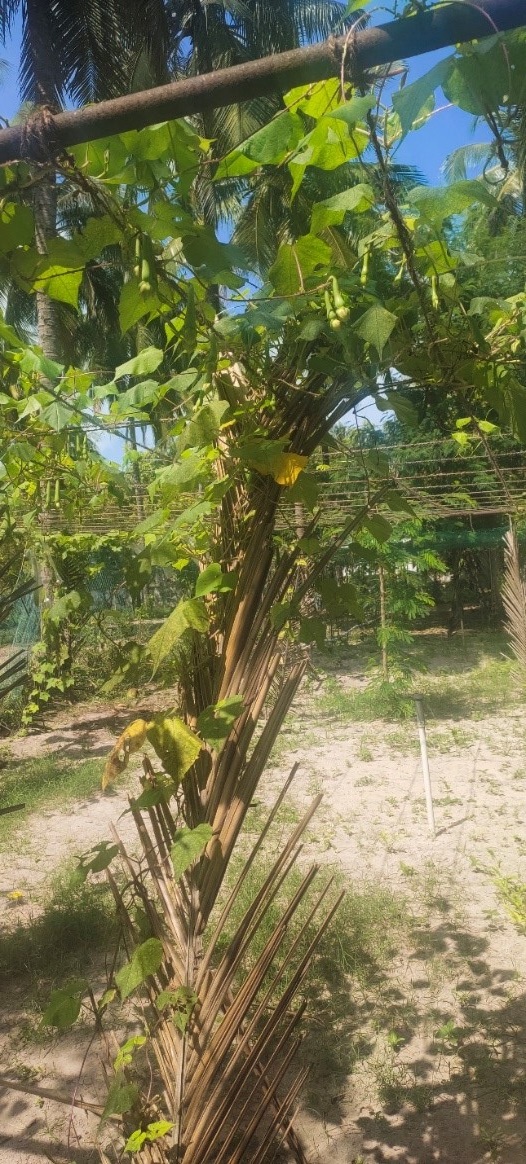
Clove bean cultivation in Pandal 
Clove bean |
||||||||
|
Bitter gourd cultivation under coconut Plantation:
Bitter gourd, locally known as “Bhaga” a preferred and important vegetable in Minicoy Islands of Lakshadweep. Considering the demand and unavailability of the vegetable in the local market ICAR- CIARI Regional station Minicoy introduced two variety of bitter gourd at Minicoy Island and tested in demonstration field. The seeds hybrid and farmer’s variety of Kerala were demonstrated in semi protected cultivation system in “Pandal” in area of 10 Sq. m. The pits were made with the dimension of 60X60X100 cm and filled with cow dung manure of 2 kg/ pit, and organic micro nutrients (500g/pit) .Two seedlings were planted in each pit of distance 50 cm apart. The yield per Sq.m was 0.75 kg in farmers variety whereas the hybrid gave 1.5kg.
|
||||||||
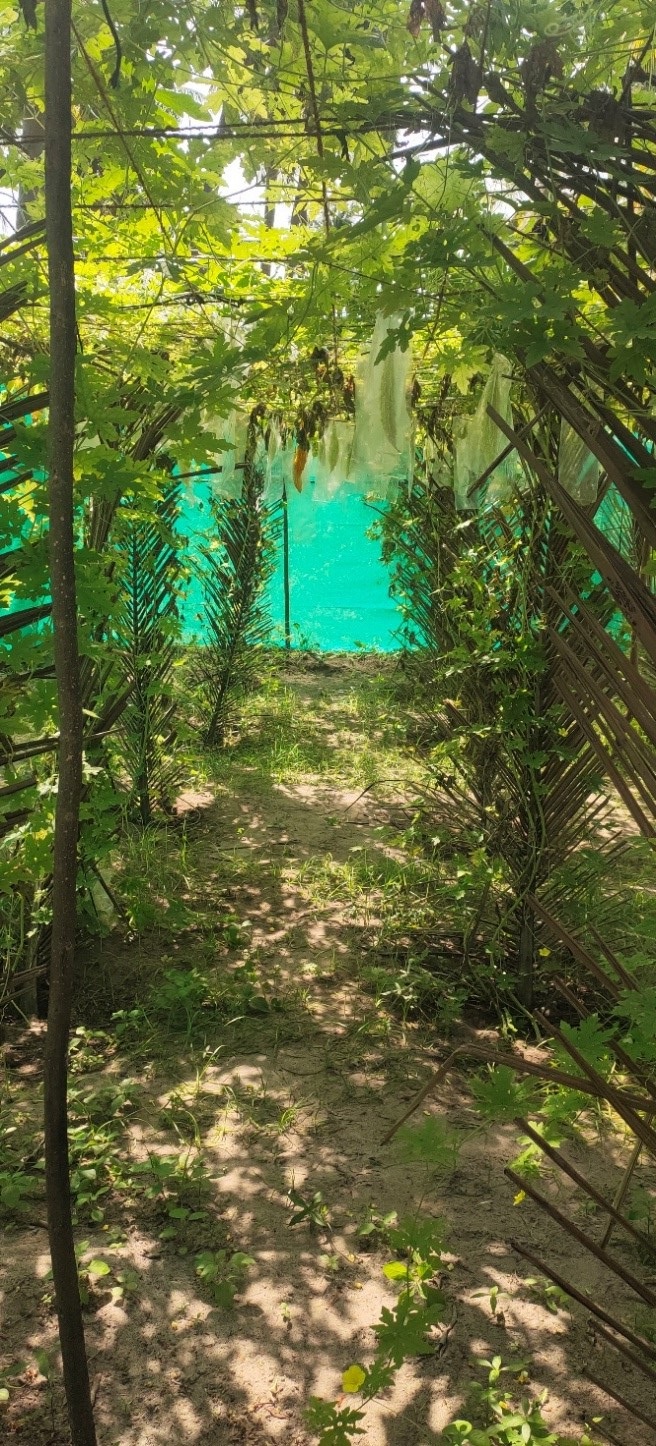
Bitter gourd demonstration plot 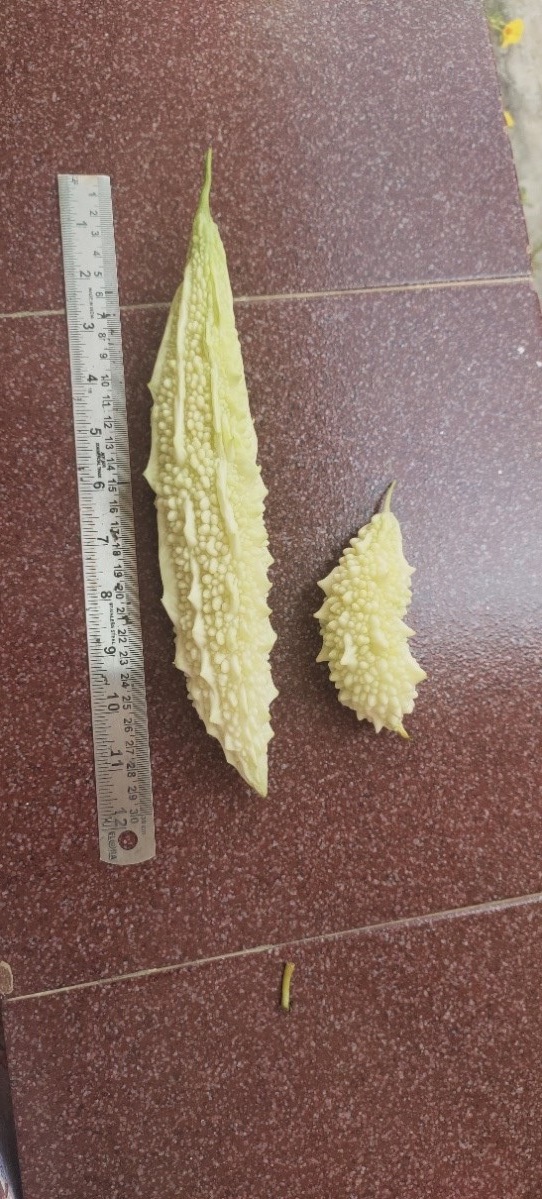
Hybrid and farmer’s variety of bitter gourd |
||||||||
|
Snake gourd cultivation under coconut Plantation:
“Fulatholi” the snake gourd is one of the cucurbit crop with consumer preference in Minicoy. The hybrid seeds of variety baby snake gourd “Yuva”-baby short was tested in field of ICAR- CIARI, Minicoy for the performance evaluation in Lakshadweep under semi protected cultivation system in “Pandal” of area 20 Sq. m. The pits were made with the dimension of 60X60X100 cm and filled with cow dung manure of 2 kg/ pit, and organic micro nutrients (500g/pit), Two seedlings were planted in each pit of distance 50cm apart. The yield was 1.04 kg/ Sq.m
|
||||||||

Snake gourd demonstration plot 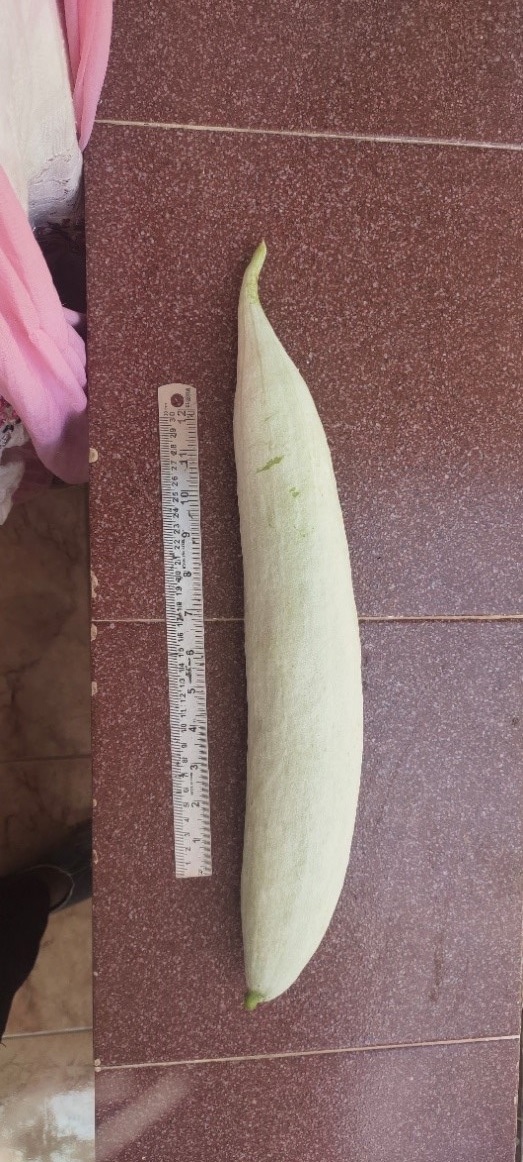
Baby snake gourd “Yuva” |
||||||||
|
Salad cucumber cultivation under coconut Plantation:
The parthnocarpic hybrid seeds of salad cucumber, KAU variety “Heera” was tested in the demonstration field of ICAR- CIARI, Minicoy under semi protected structure and performance were evaluated. The variety performed well in the cultivation system. The pits were made with the dimension of 60X60X100 cm and filled with cow dung manure of 2 kg/ pit, and organic micro nutrients (500g/pit).Two seedlings were planted in each pit of distance 50 cm apart. Good flowering and fruit set were observed in the plants. Due to the heavy fruit fly attack the yield got affected. A fully protected system with fruit fly trap were planned for the future. The yield was 0.5kg/per Sq.m.
|
||||||||

Fruit setting in “Heera” salad cucumber 
The largest fruit |
||||||||
|
Brinjal cultivation under coconut Plantation:
“Burry” the Brinjal a highly preferred vegetable crop in Minicoy, Lakshadweep. Considering the local preference and consumer interest, the demonstration plots of brinjal of varieties, Pusa purple long, IIHR green, CIARI Brinjal 1, a hybrid purple round and a farmer variety from Minicoy were tested in field of ICAR- CIARI, Minicoy and performance were evaluated. The yield per Sq.m was 1.85 kg/ Sq.m in Pusa purple long, 1.38 kg/ Sq.m in IIHR green long, 0.86 kg/ Sq.m in Purple round ,0 .67 kg/ Sq.m in CIARI brinjal 1 compared to0.02 kg/ Sq.m in Farmer’s variety respectively.
|
||||||||

Brinjal varieties tested in ICAR-CIARI Regional station, Minicoy (a) Pusa purple long, (b) IIHR green long, (c) CIARI brinjal 1, (d) Hybrid purple round, (e) Farmer Variety from Minicoy 
Demonstration plot of Brinjal variety Pural Purple long |
||||||||
|
Chilli cultivation under coconut Plantation:
Five green chilli varieties viz, two CIARI Minicoy breed, (Suraj mukhi type and bullet type), and three hybrids Namdhari, Mirza, Rustum were tested in the demonstration field of ICAR- CIARI, Minicoy. The two farm raised varieties performed well than the other hybrid varieties in disease resistance and quality. The seedlings of the varieties were raised and sold through the Regional station sales counter.The yield per Sq.m were 0.34 kg/ Sq.m in Farm breed Suraj mukhi, 0.45 kg/ Sq.m in Farm breed Bullet, 0.21 kg/ Sq.m in Namdhari, 0.13 kg/ Sq.m in Mirza, 0.11 kg/ Sq.m in Rustum respectively.
|
||||||||

Green chilli varieties tested in demonstration field of Minicoy (a) farm breed Suraj mukhi, (b) Farm breed bullet, (c) Rustum, (d) H1 hybrid, (e) Mirza |
||||||||
|
Scarlet gourd under coconut shade:
Two local varieties of coccinia, Minicoy local and Maldive local were tested in the demonstration field of ICAR- CIARI Regional station Minicoy. The total area of 60 Sq.m were ploughed and the planting material were planted in 2 m distance apart. Cow dung and poultry manure were used as base manure in pits of 1X1x0.5 m pits. It was observed that the Minicoy local performed well in disease resistance and yield per unit area than the Maldives local. But the fruit size of the Maldives local is double than that of the Minicoy local. The yield per sq.m in Farmer’s variety from Minicoy is 1.2 kg and Farmer’s variety from Maldives is 0.03 kg/ Sq.m.
|
||||||||

Coccinia (a) local variety from Minicoy, (b) variety from Maldives |
||||||||
|
Rabi season vegetables under coconut plantation:
Coffi (Cabbage) and Maw coffi (Cauliflower), the most demanded vegetables in Minicoy Islands of Lakshadweep. The intercropping of these vegetables tested in the demonstration field of ICAR-CIARI regional station Minicoy and the same is demonstrated to the famers through the field day conducted on 1st March 2023.
|
||||||||
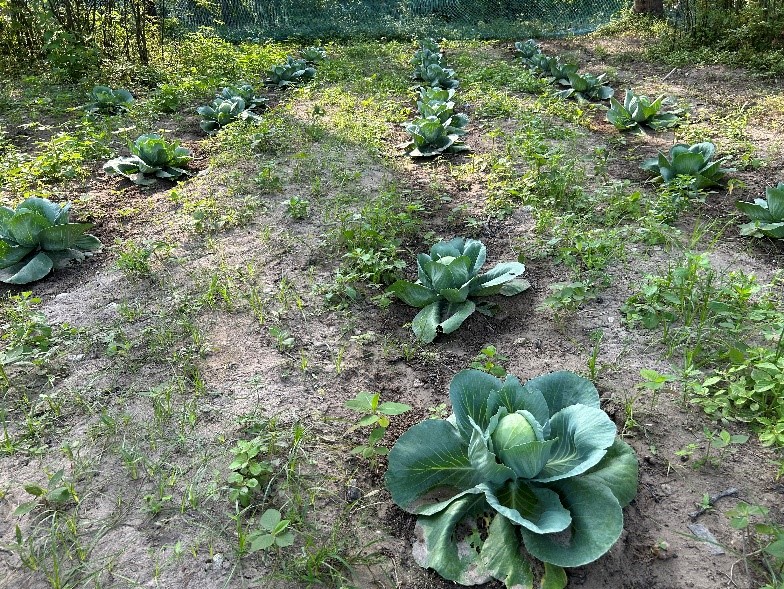
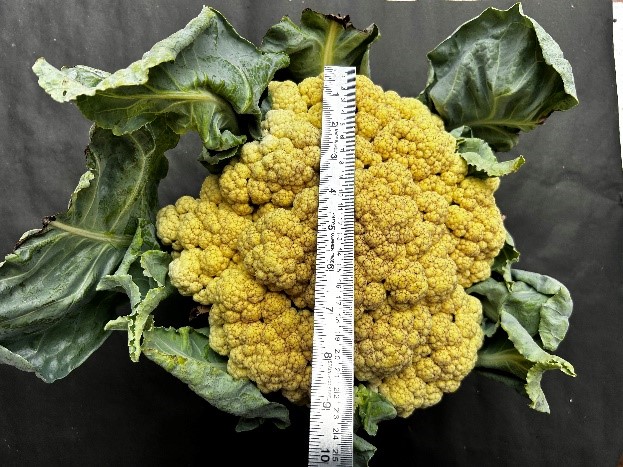
Marigold Cultivation :
|
|


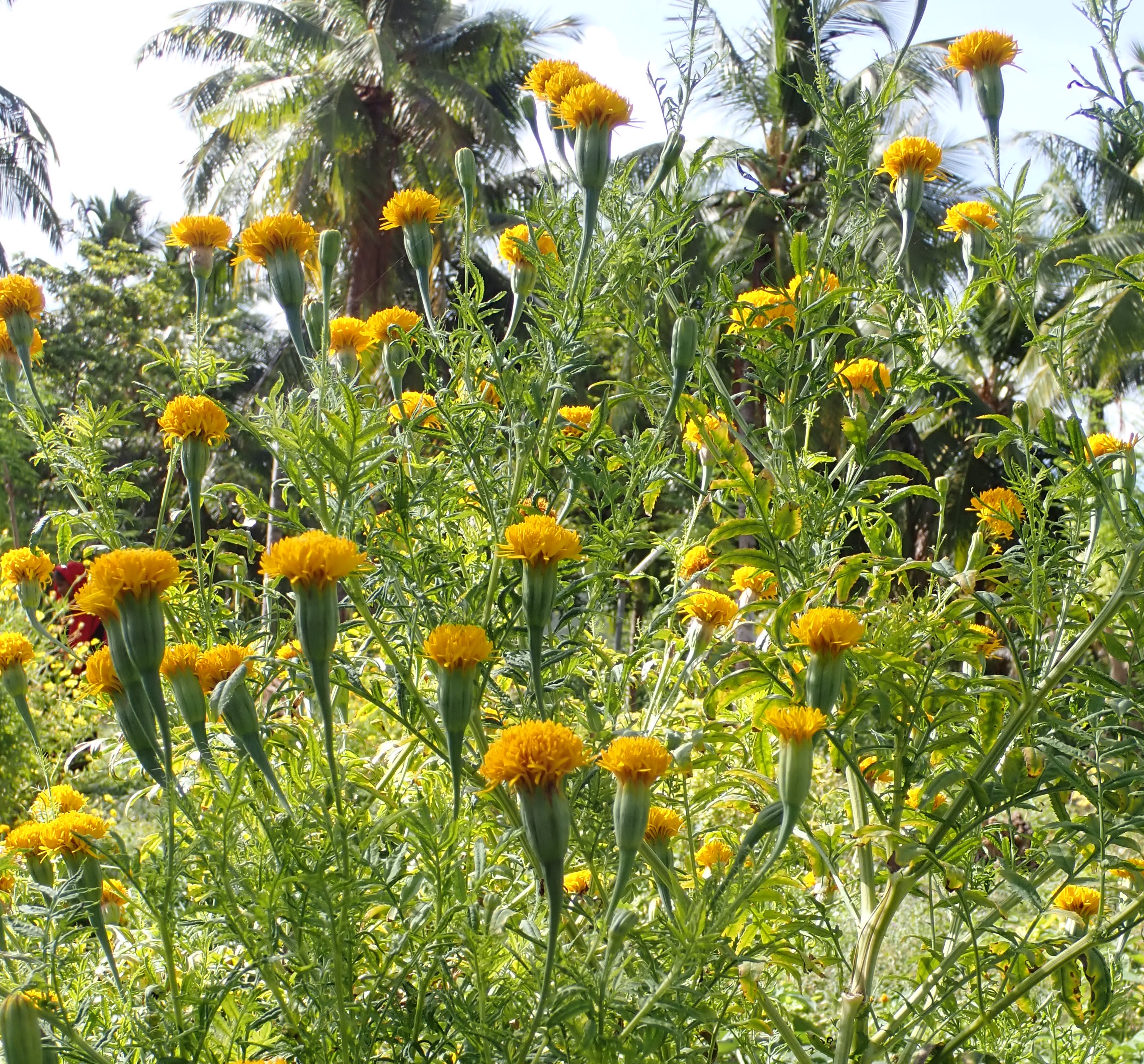
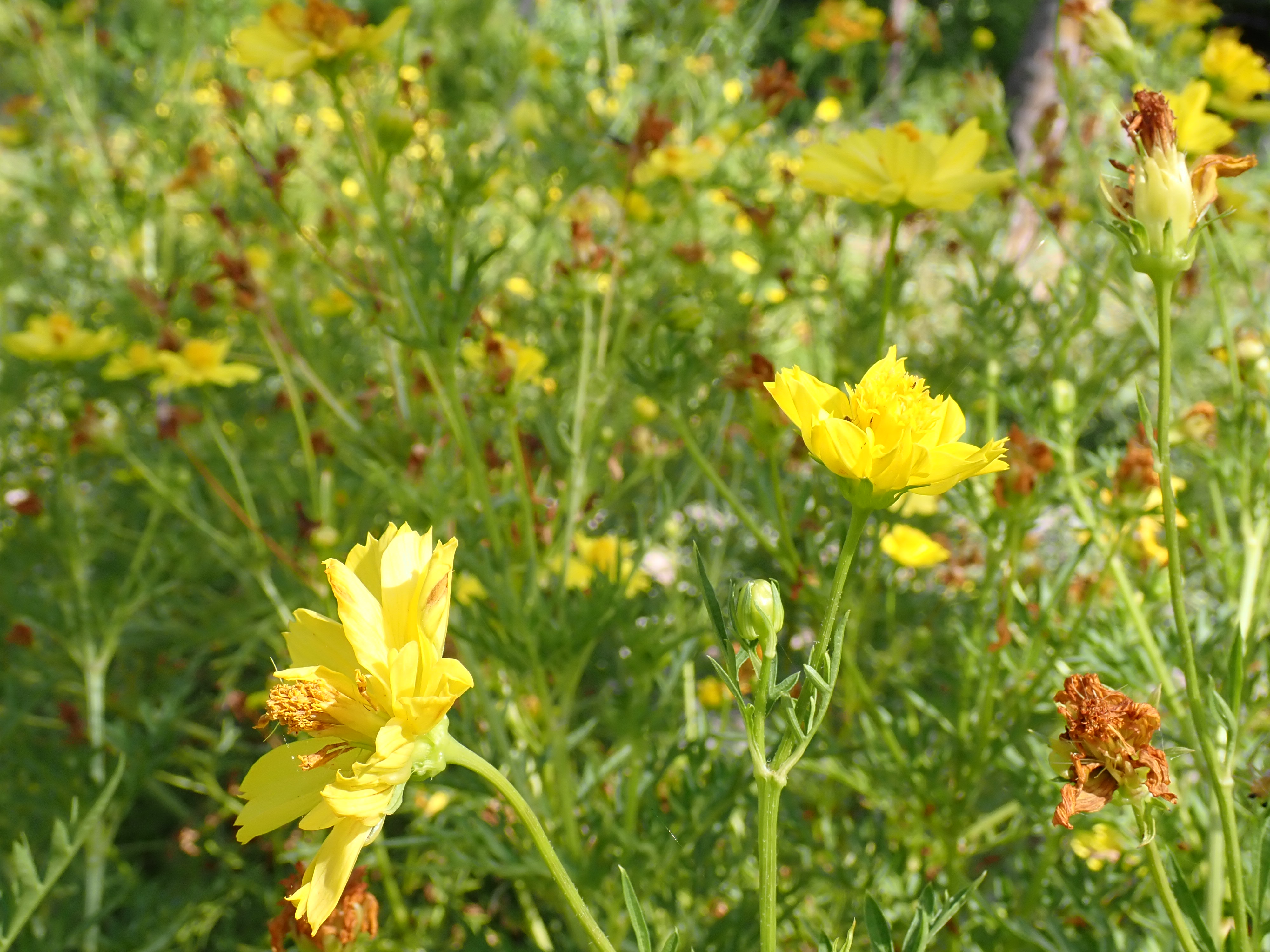
Tomato:
|
|
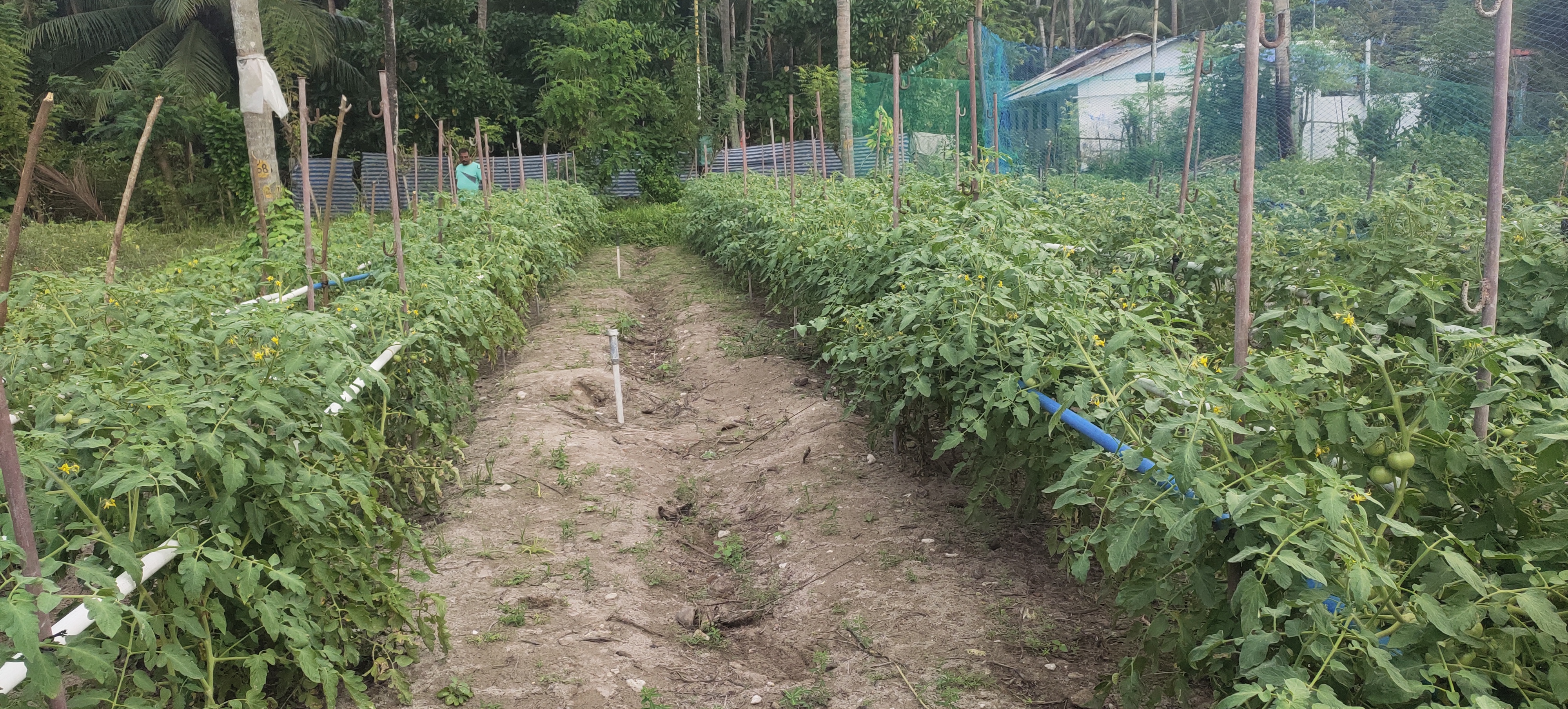
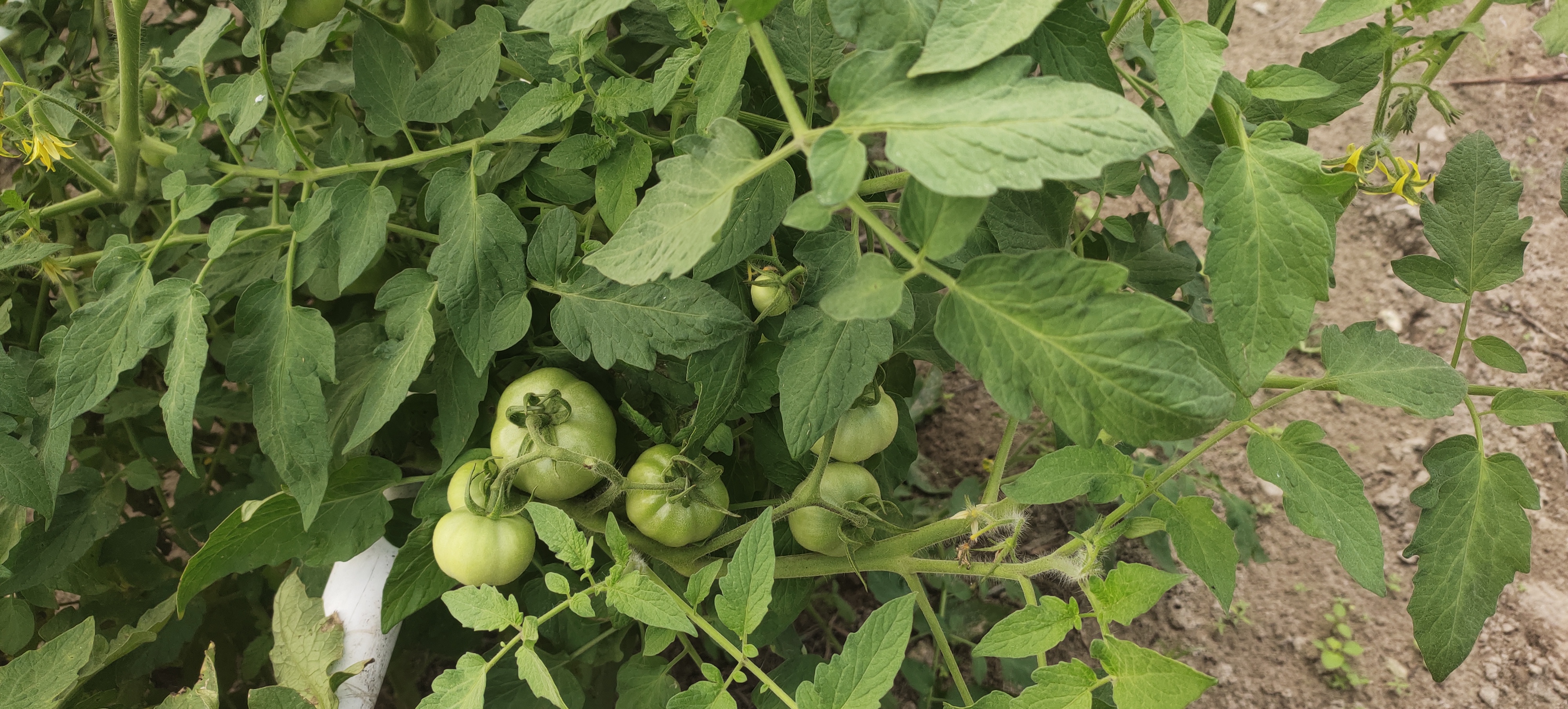
Poultry:
|
|
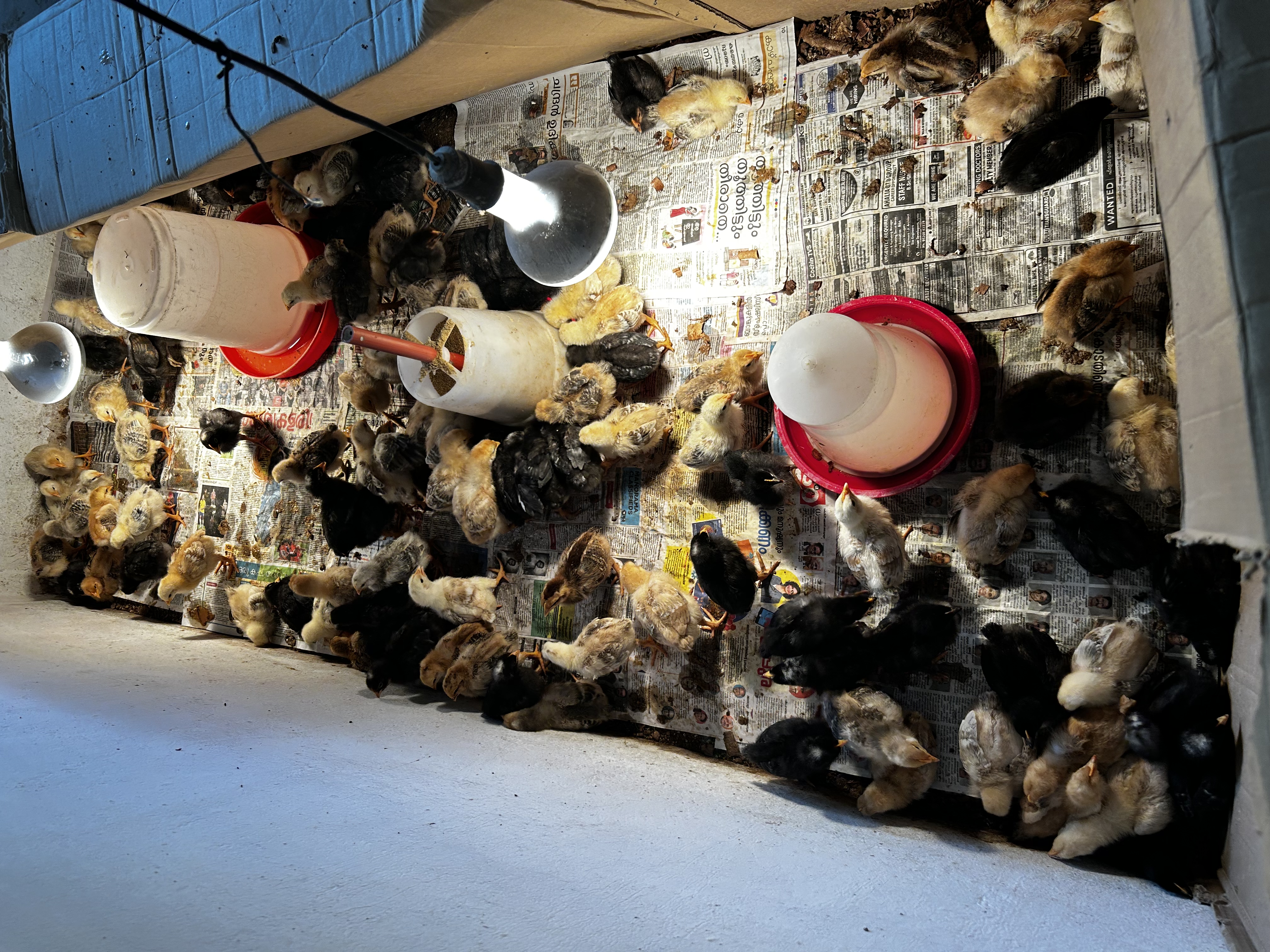


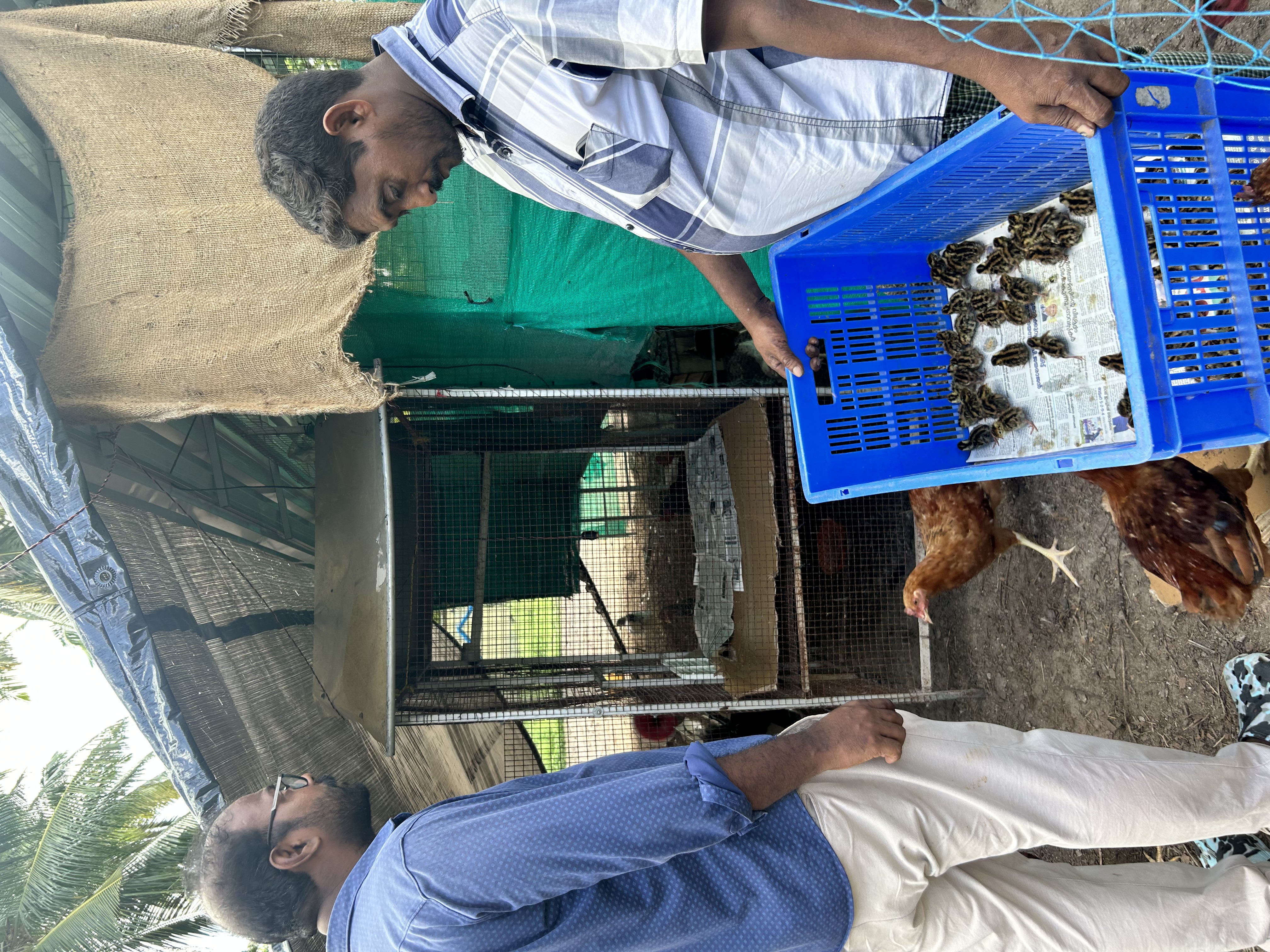
Konkan Kanyal Goats:
|
|

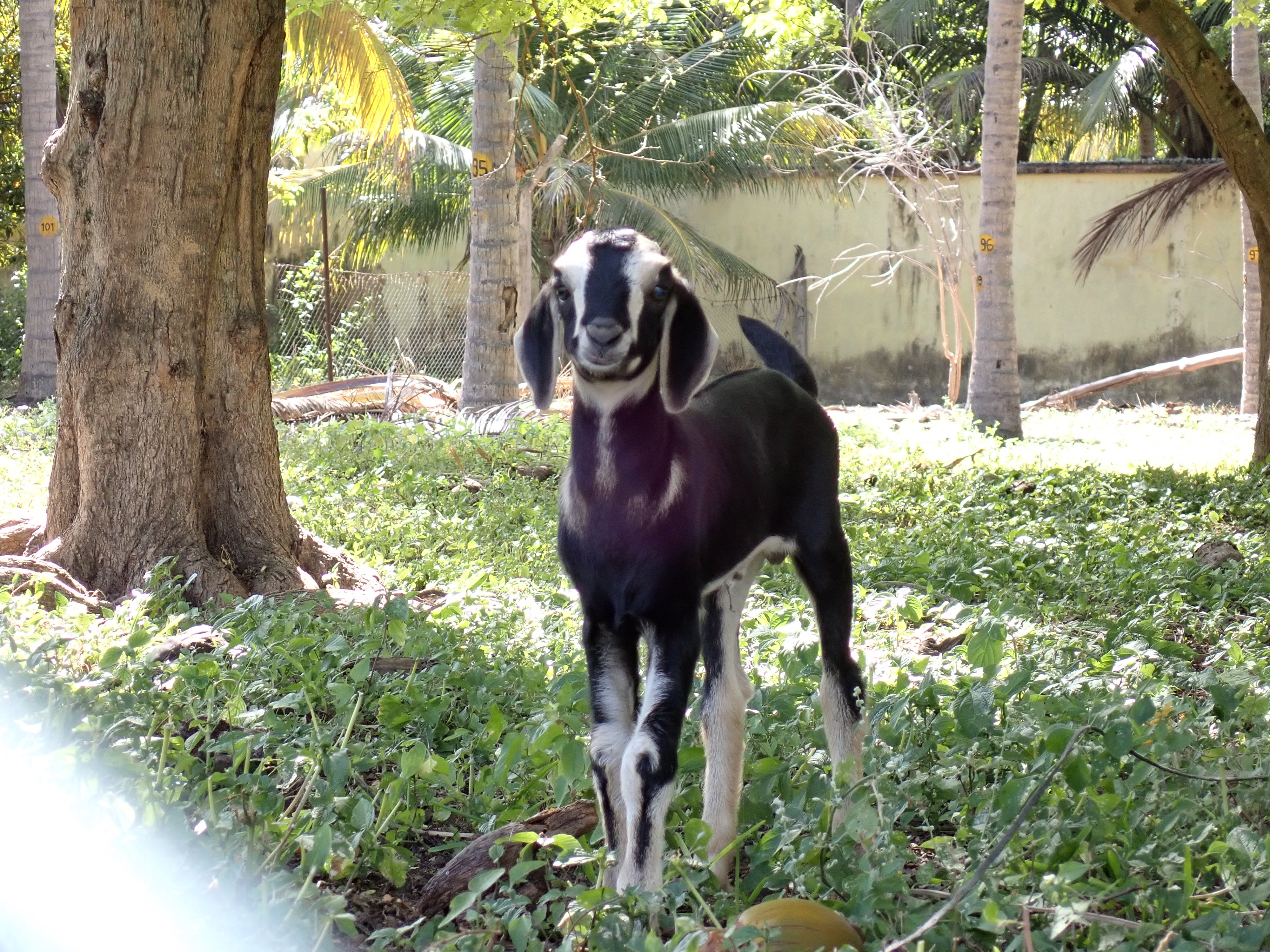
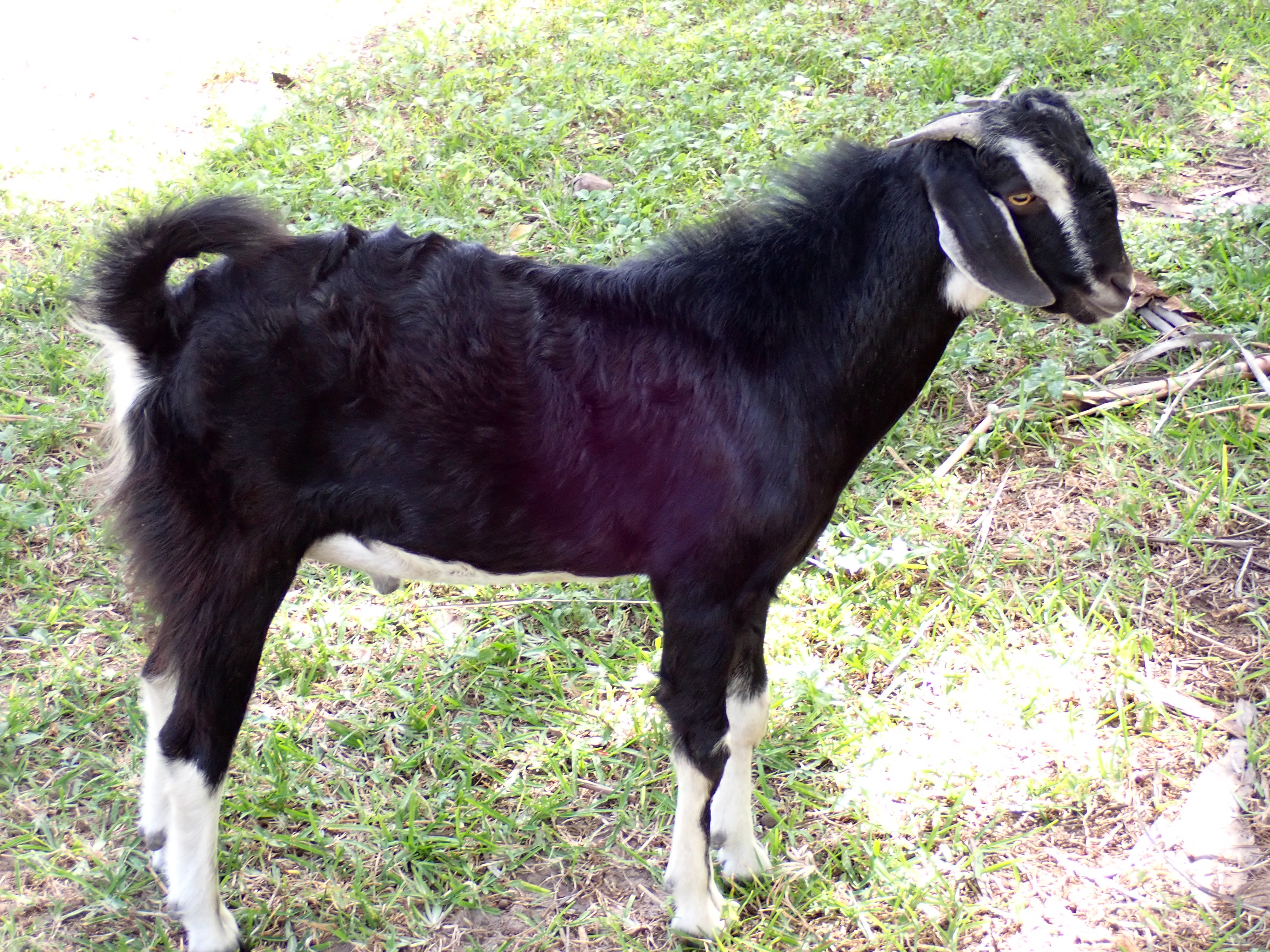
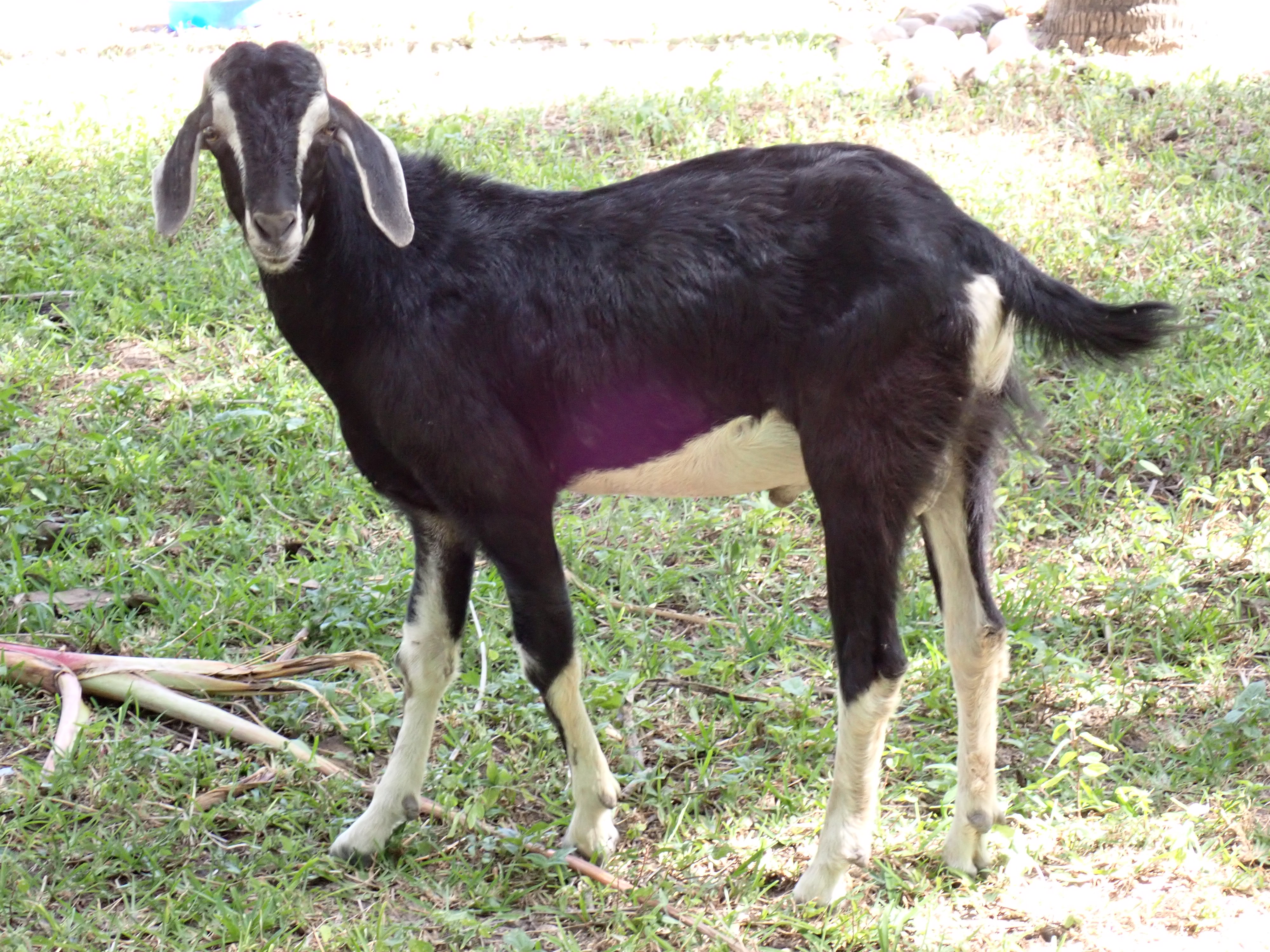
|
|
Cattles:
|
||||||||
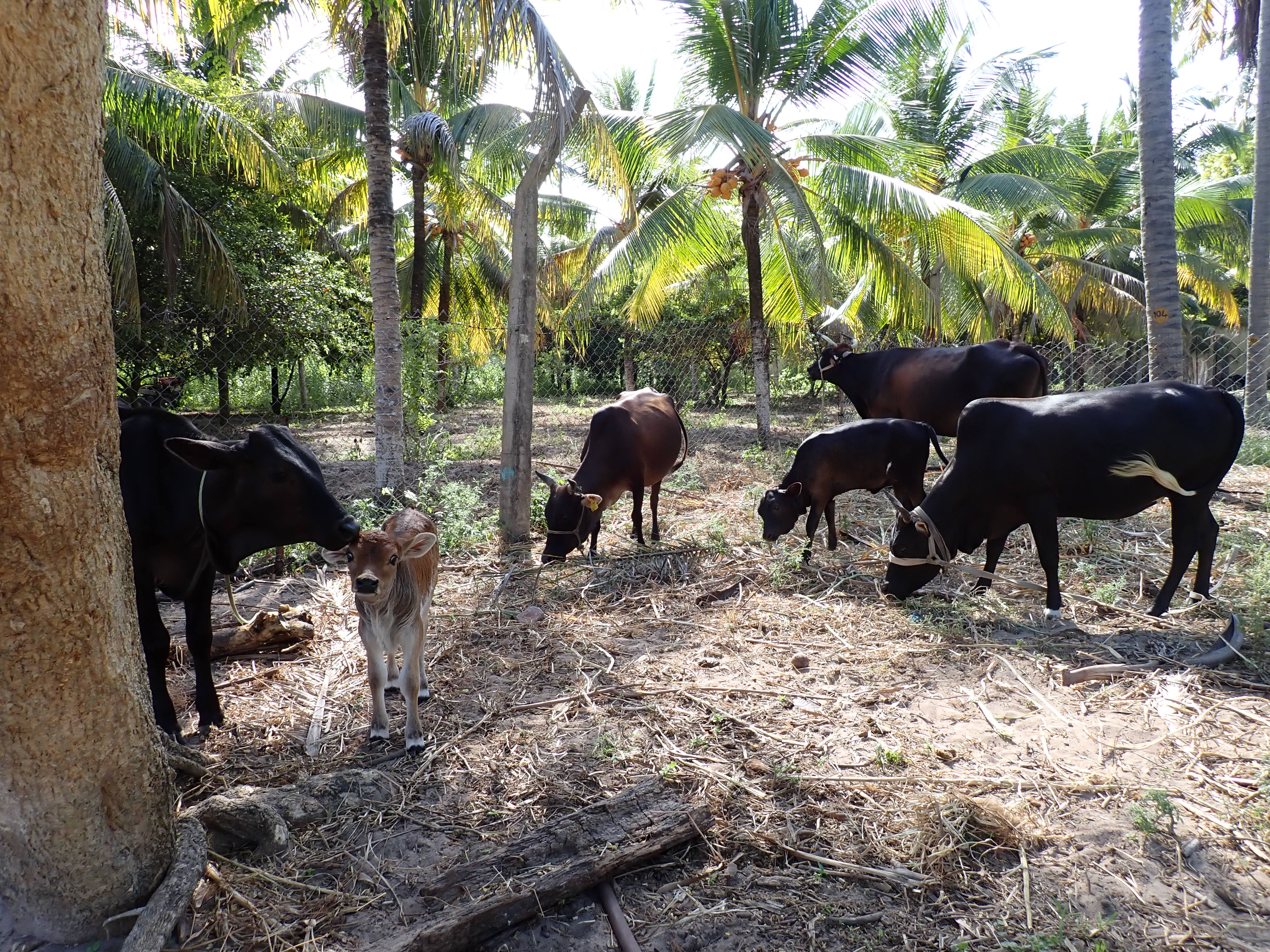
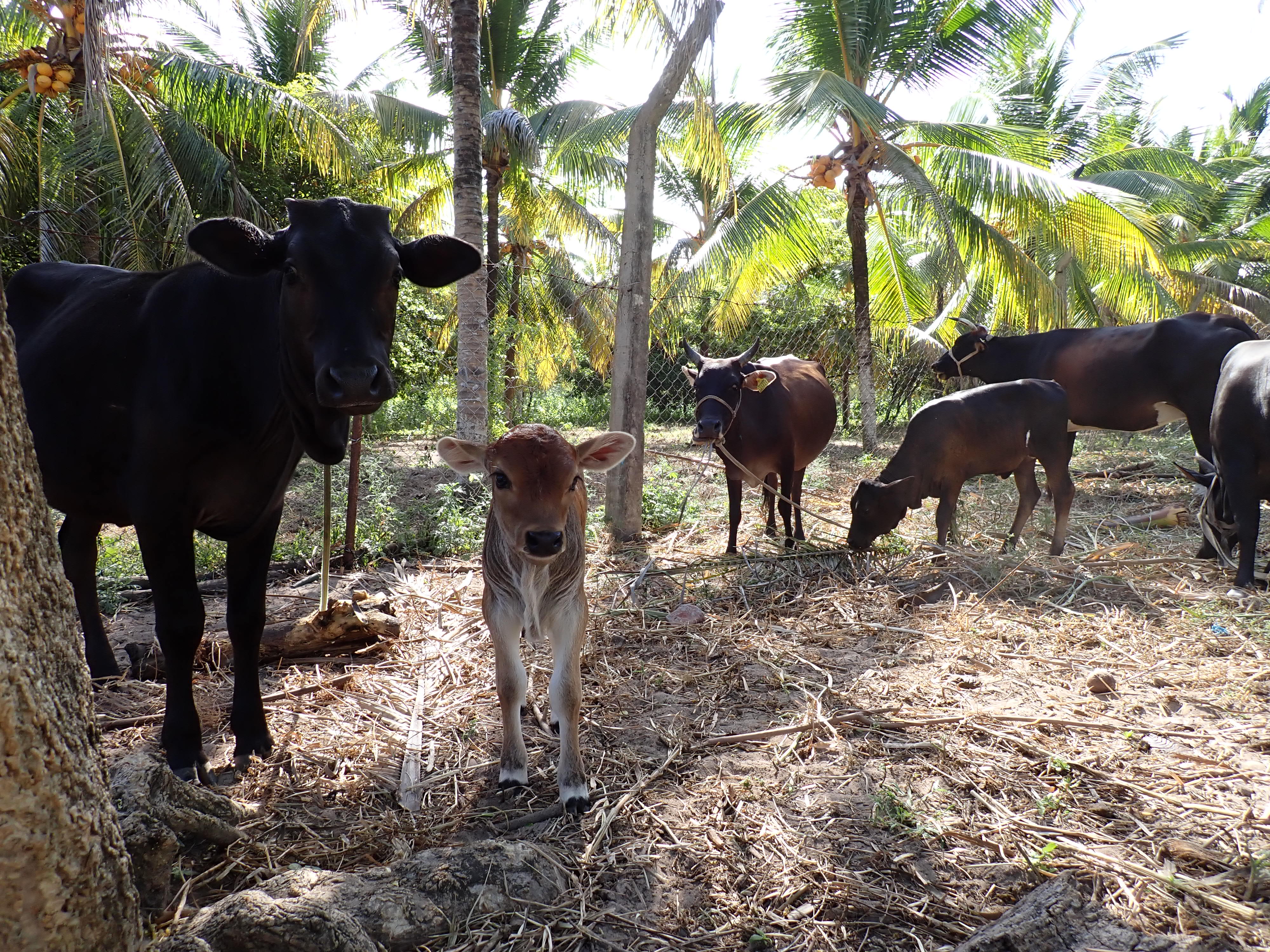
|
||||||||
|
Fisheries:
|
||||||||
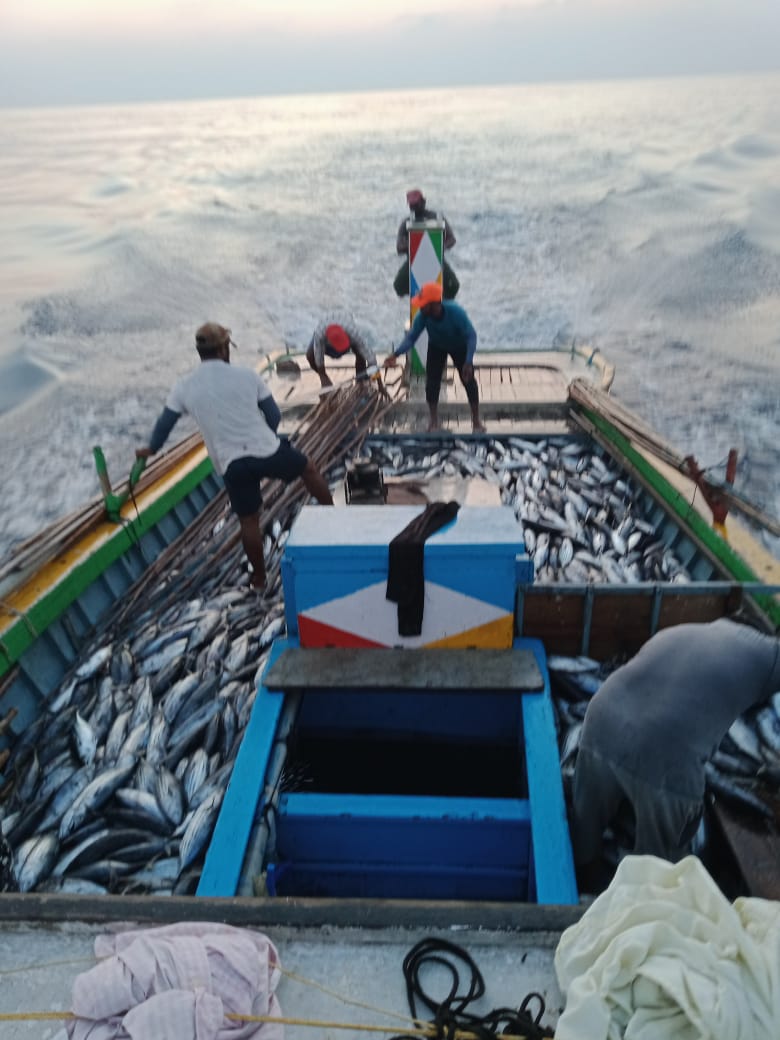

|
| Glimpses of Activities |
|||
|---|---|---|---|
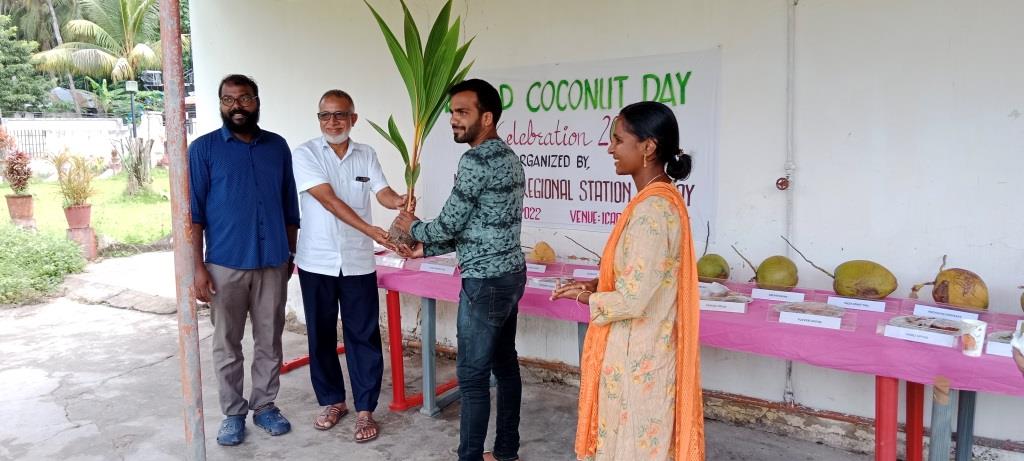
World Coconut day

Agriculture Education day

World Environment Day

World Fisheries day
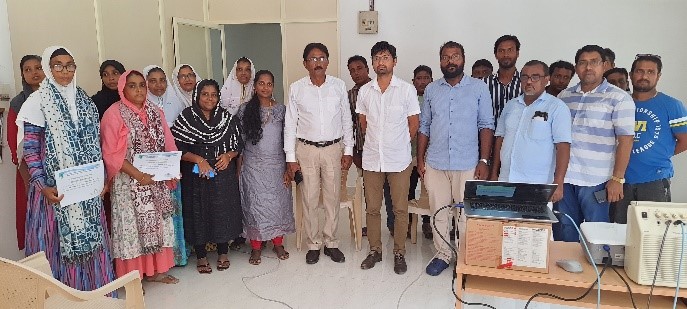
46th Foundation Day
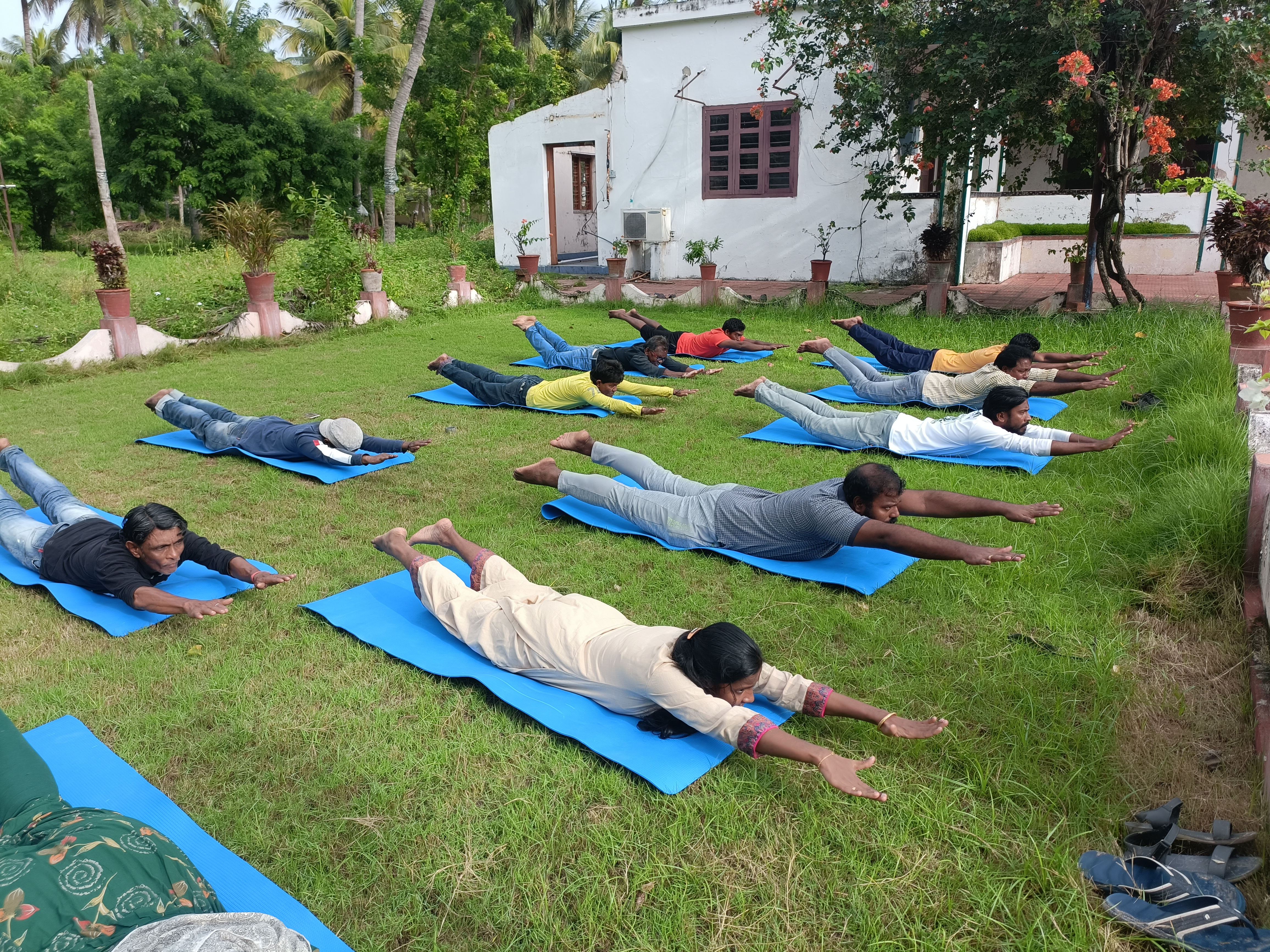
International Yoga day
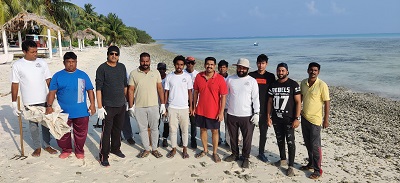
Beach Cleaning Drive
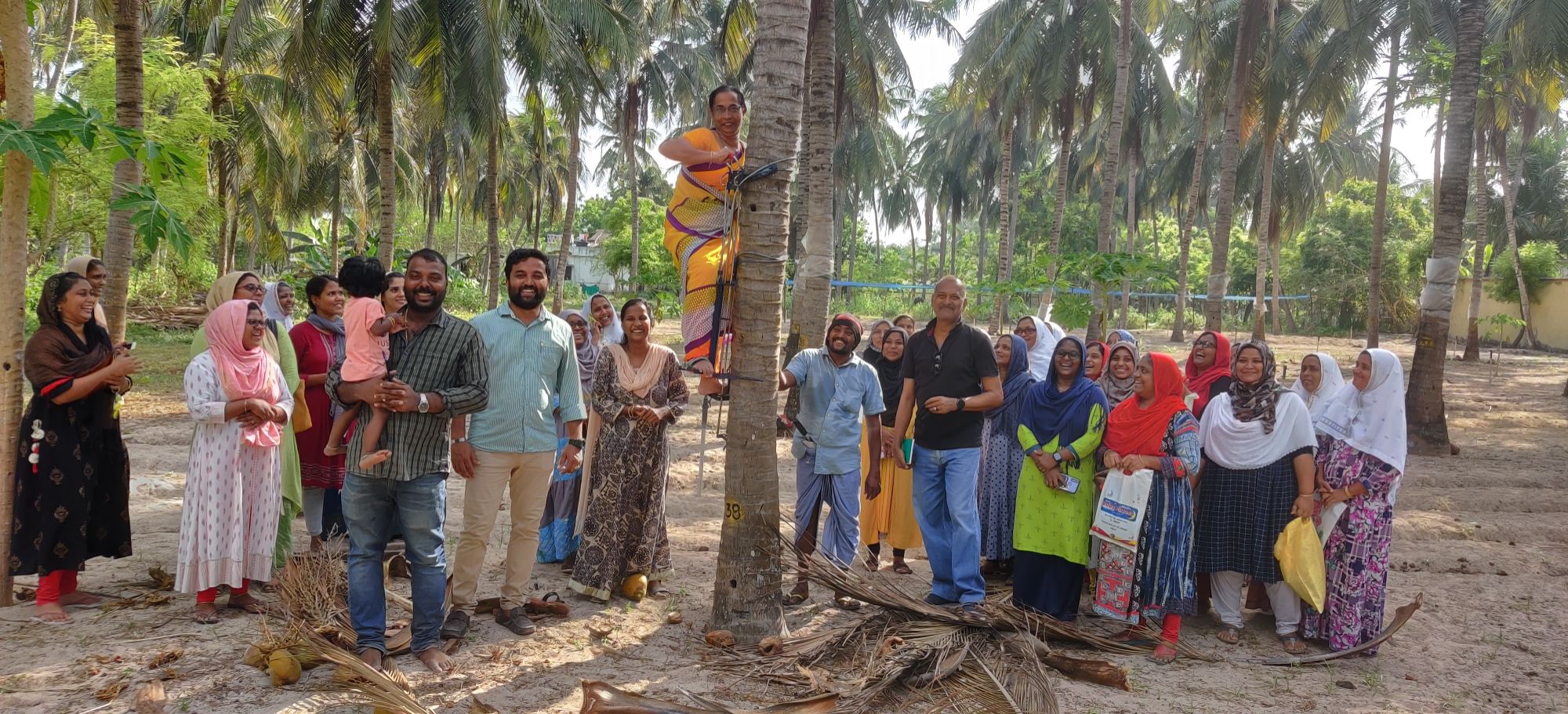
Exposure visit on technological intervention for SHG’s
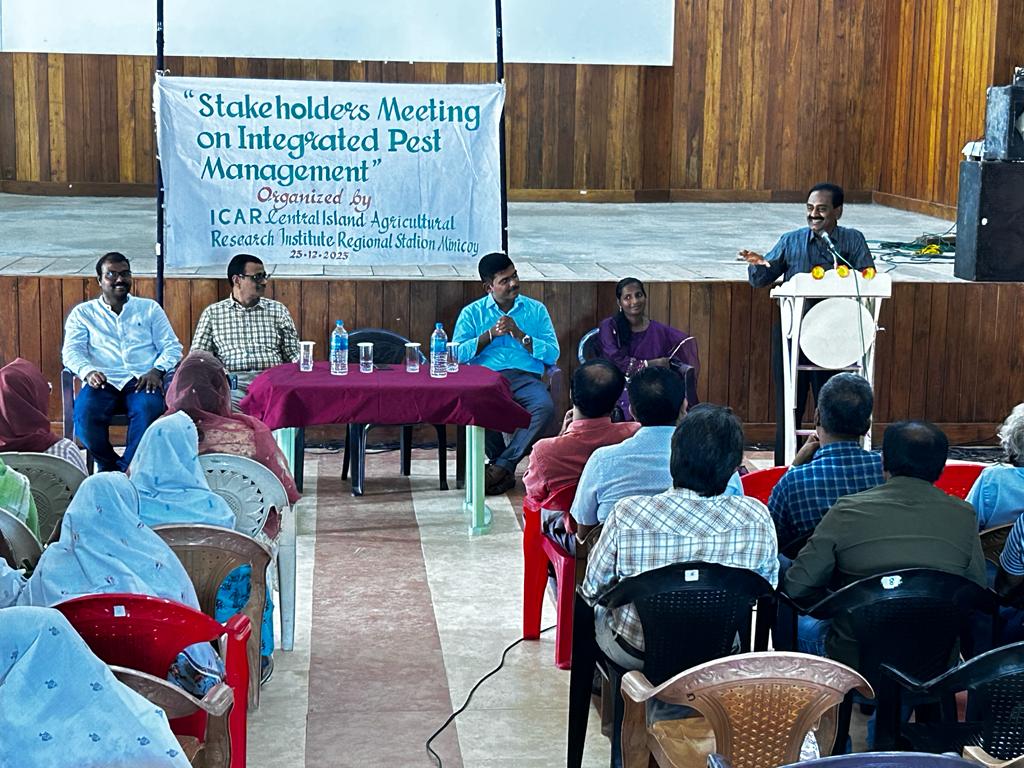
Dr. Mani Chellapan, Dean & Professor, KAU visits Minicoy to Impart IPM as expert
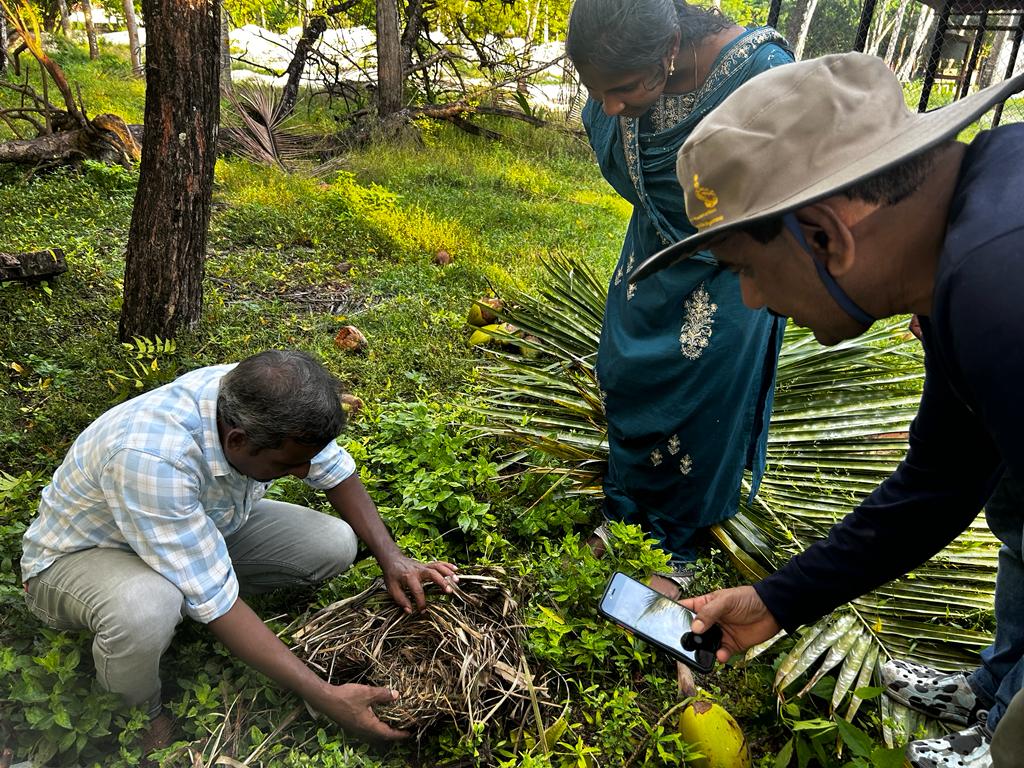
Dr. Mani Chellapan, Dean & Professor, KAU visits minicoy to Impart IPM as expert

